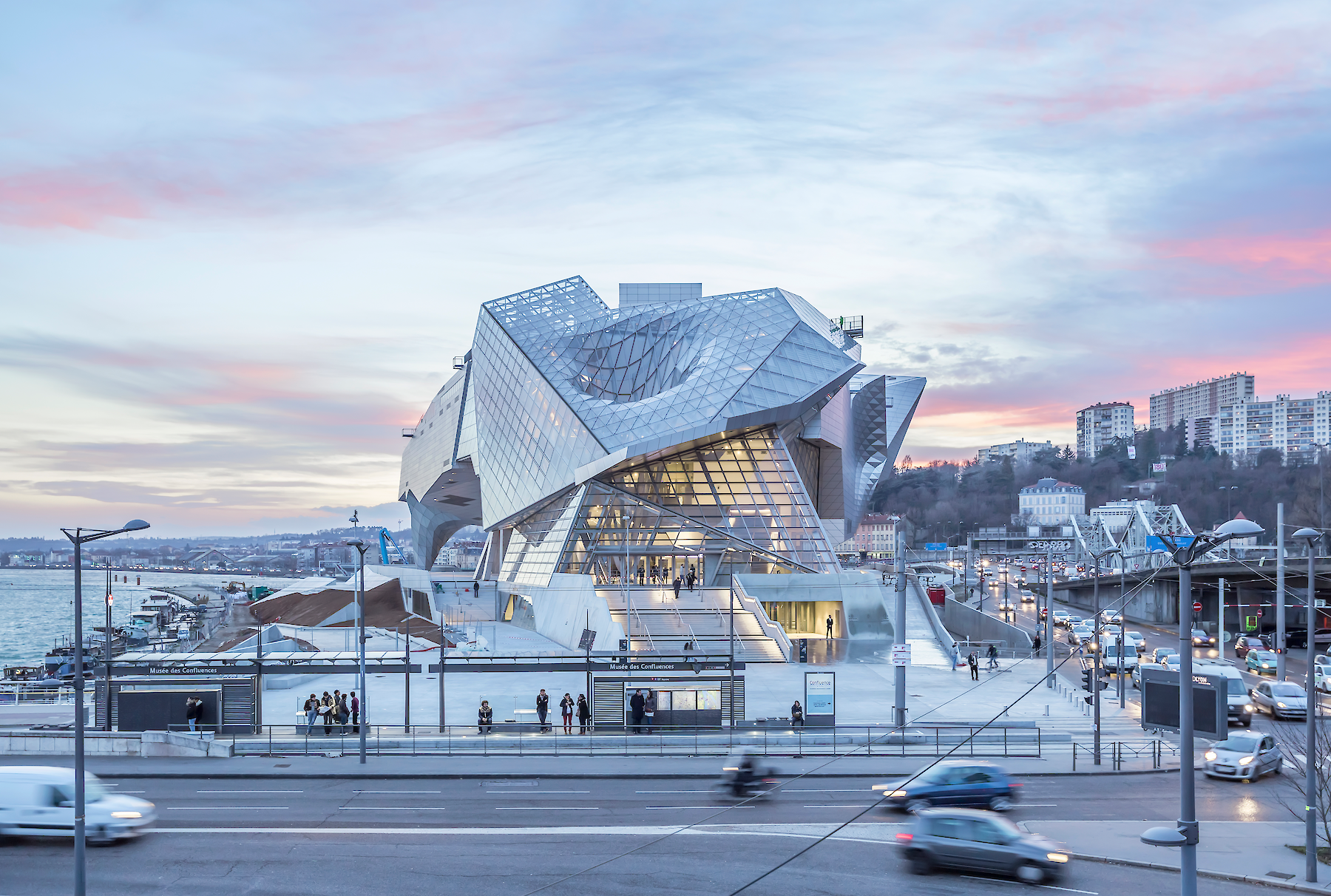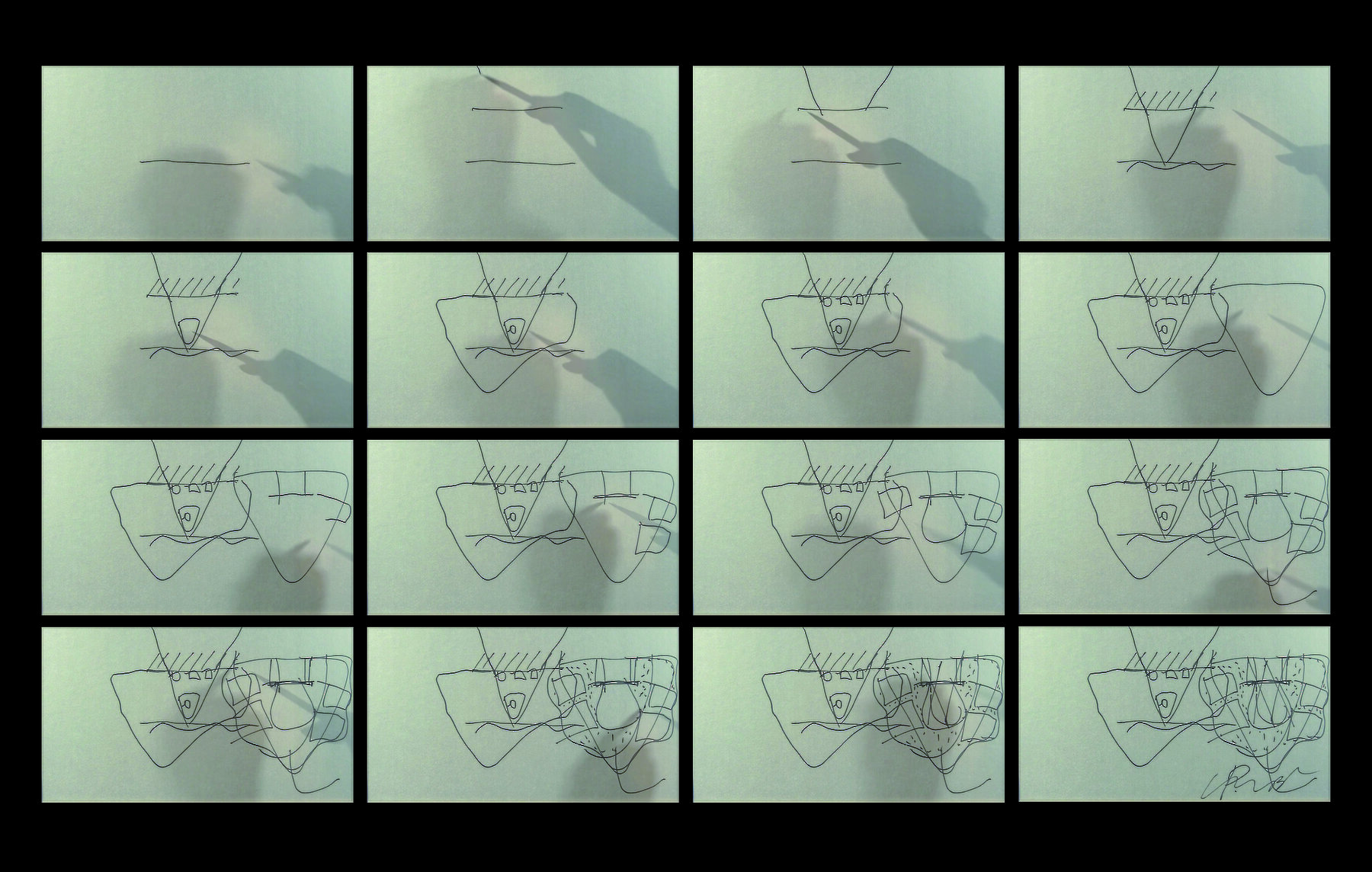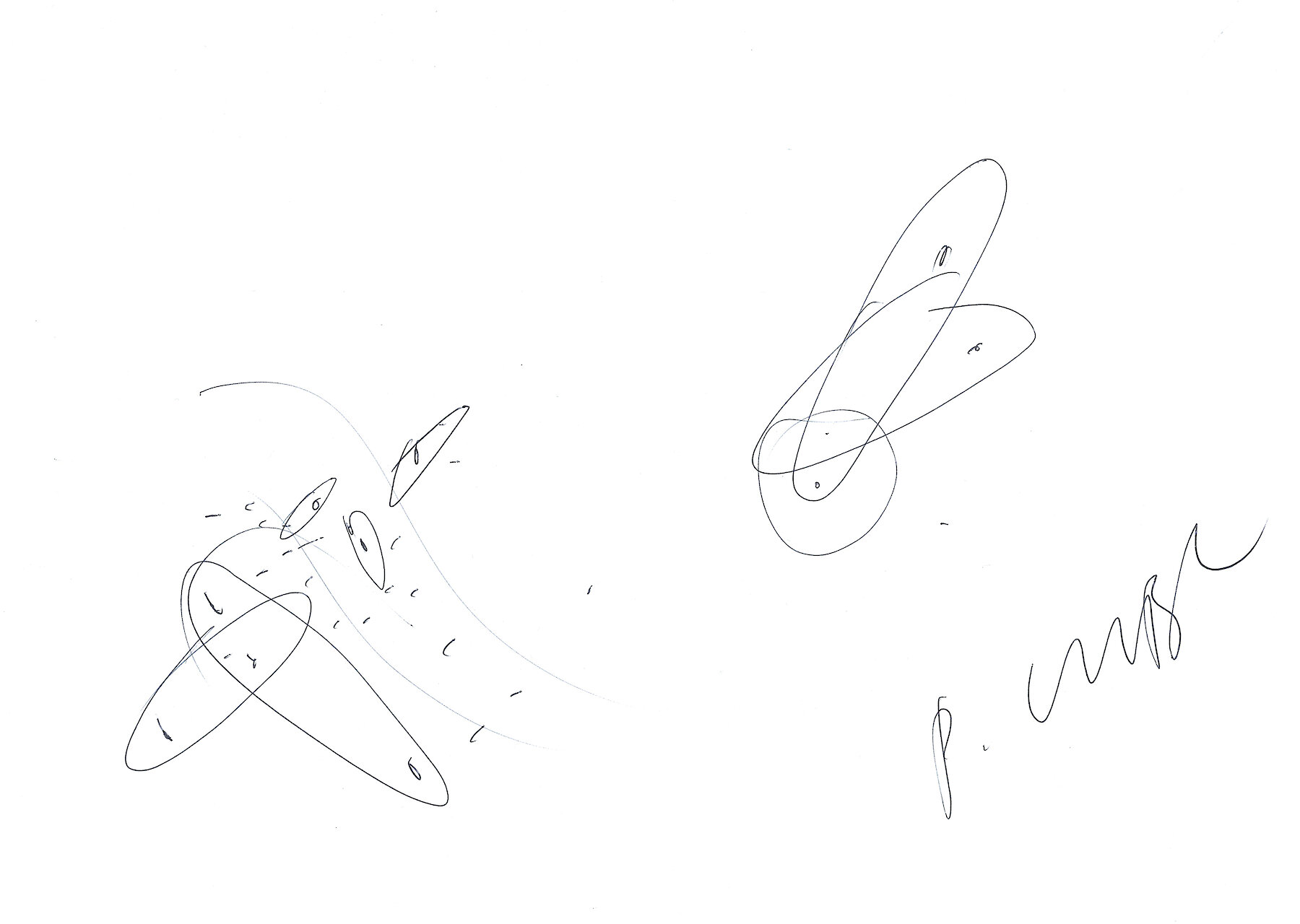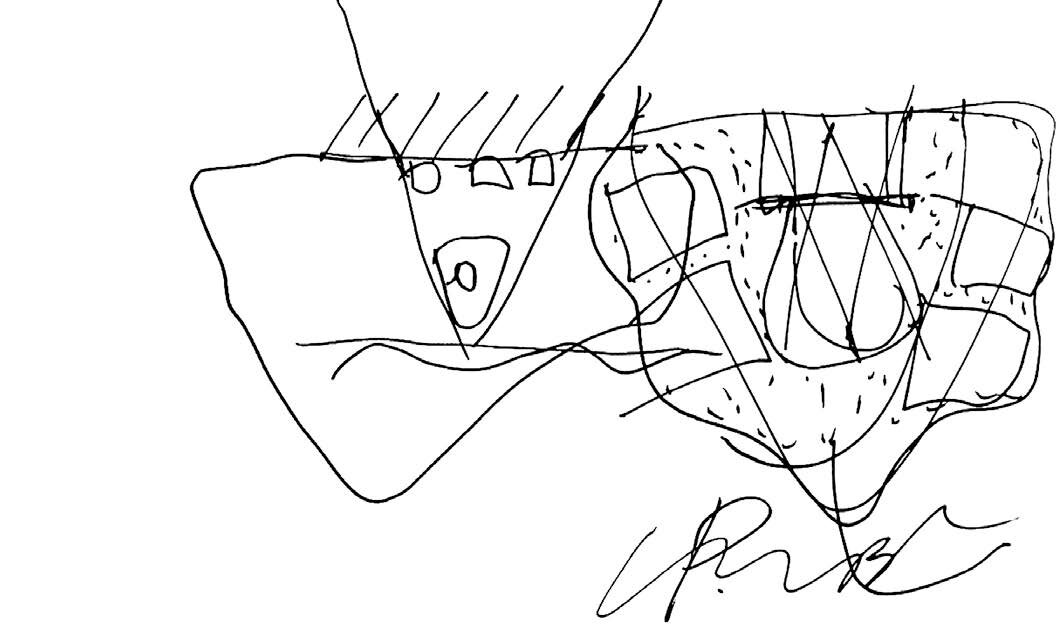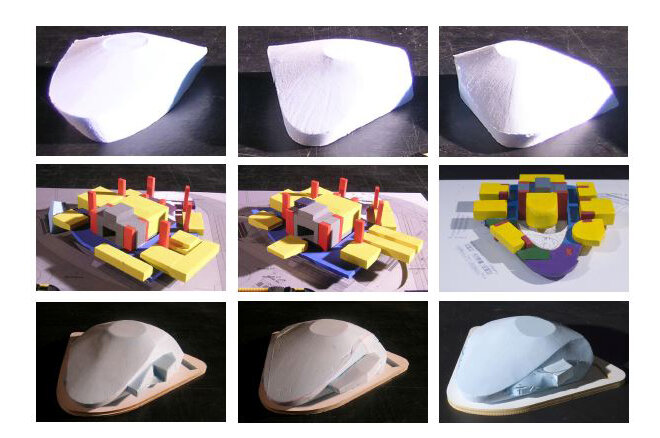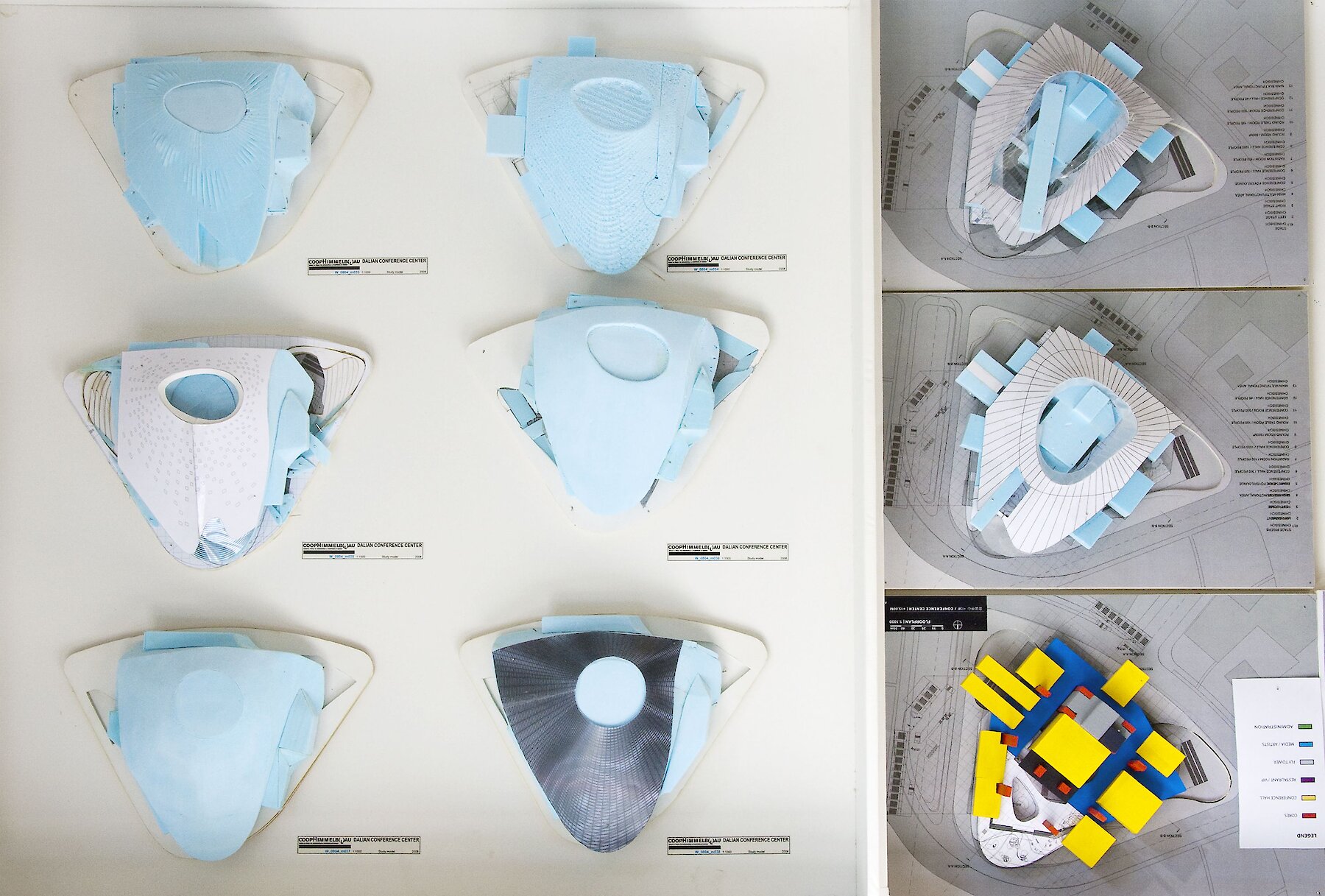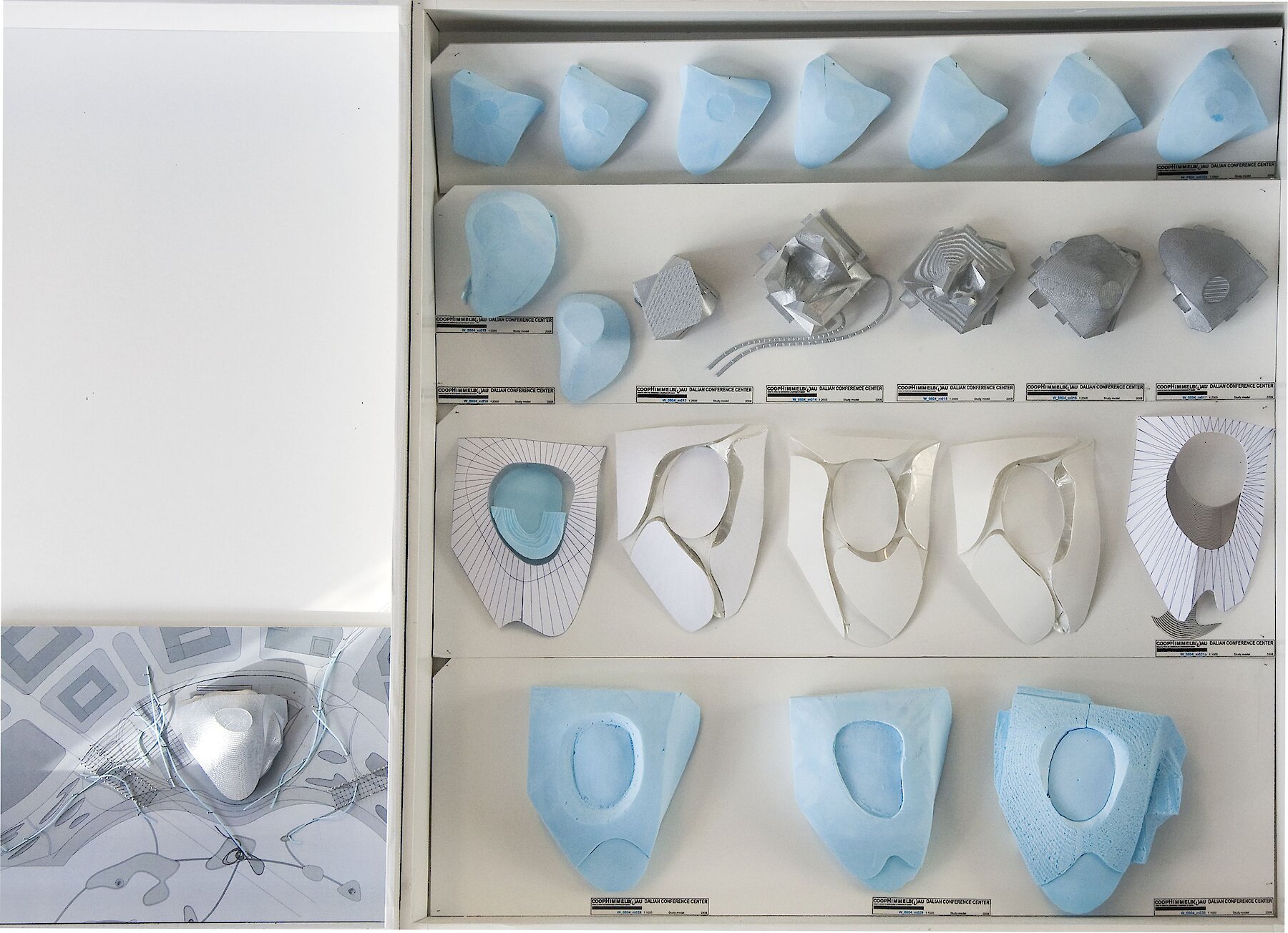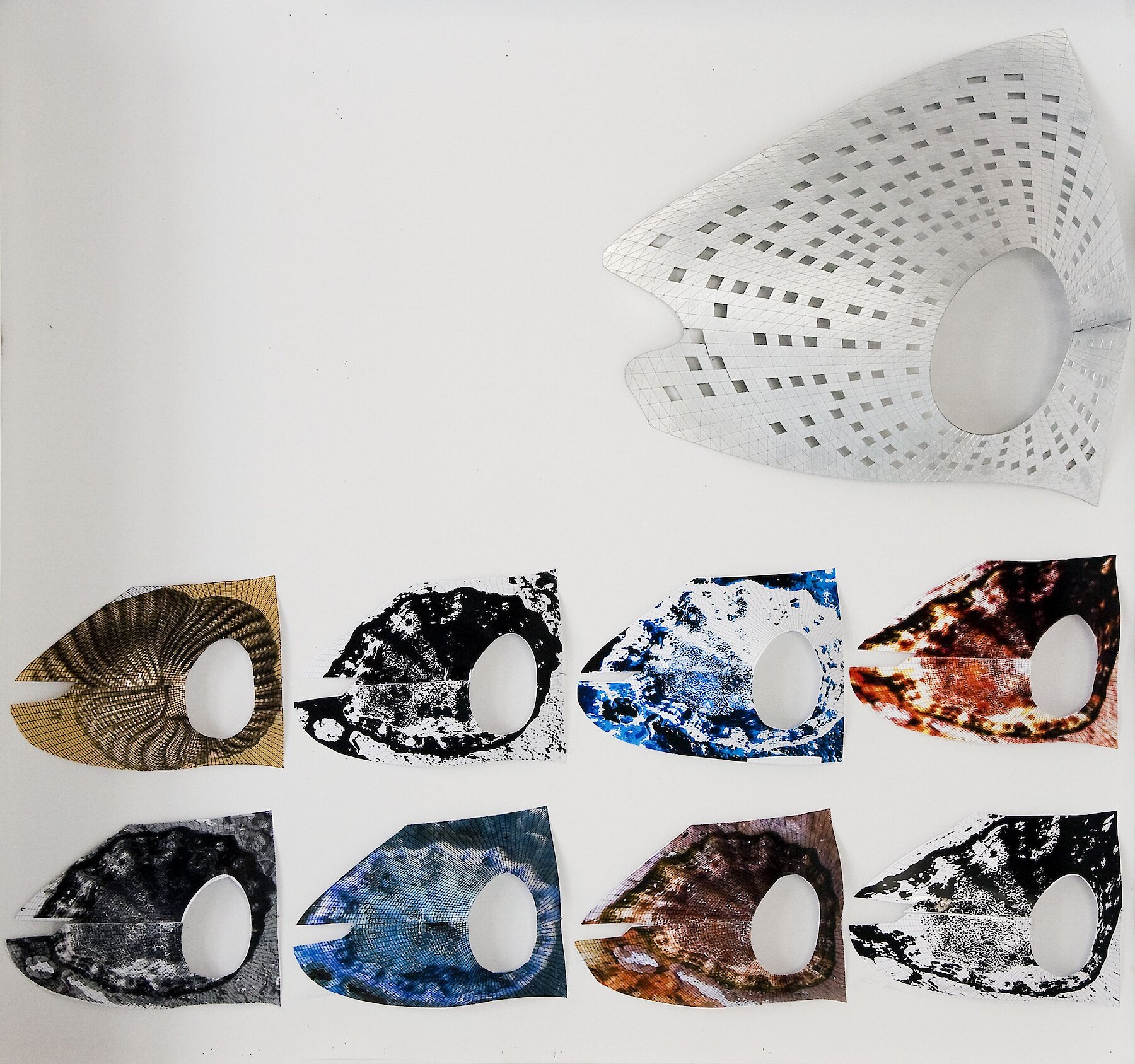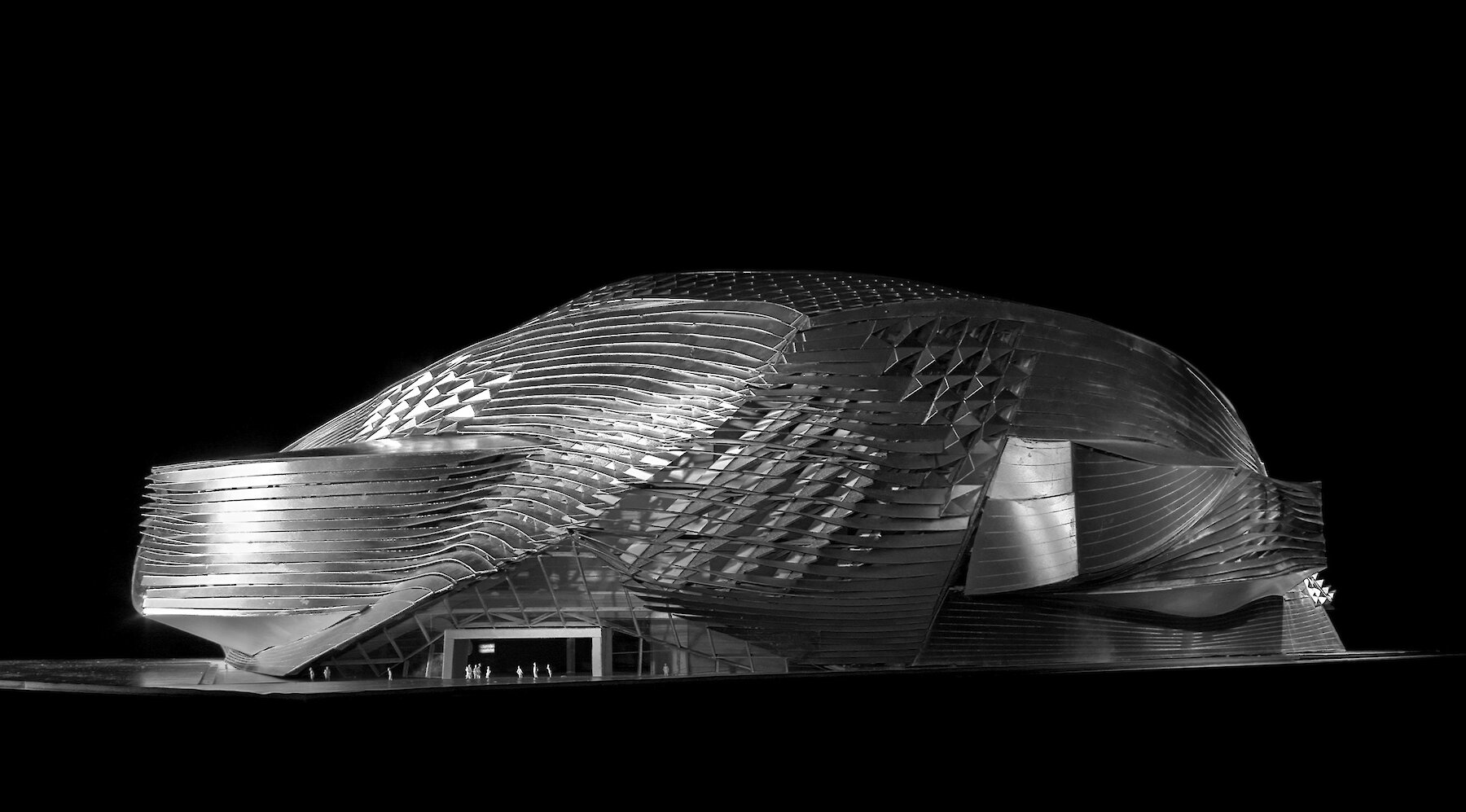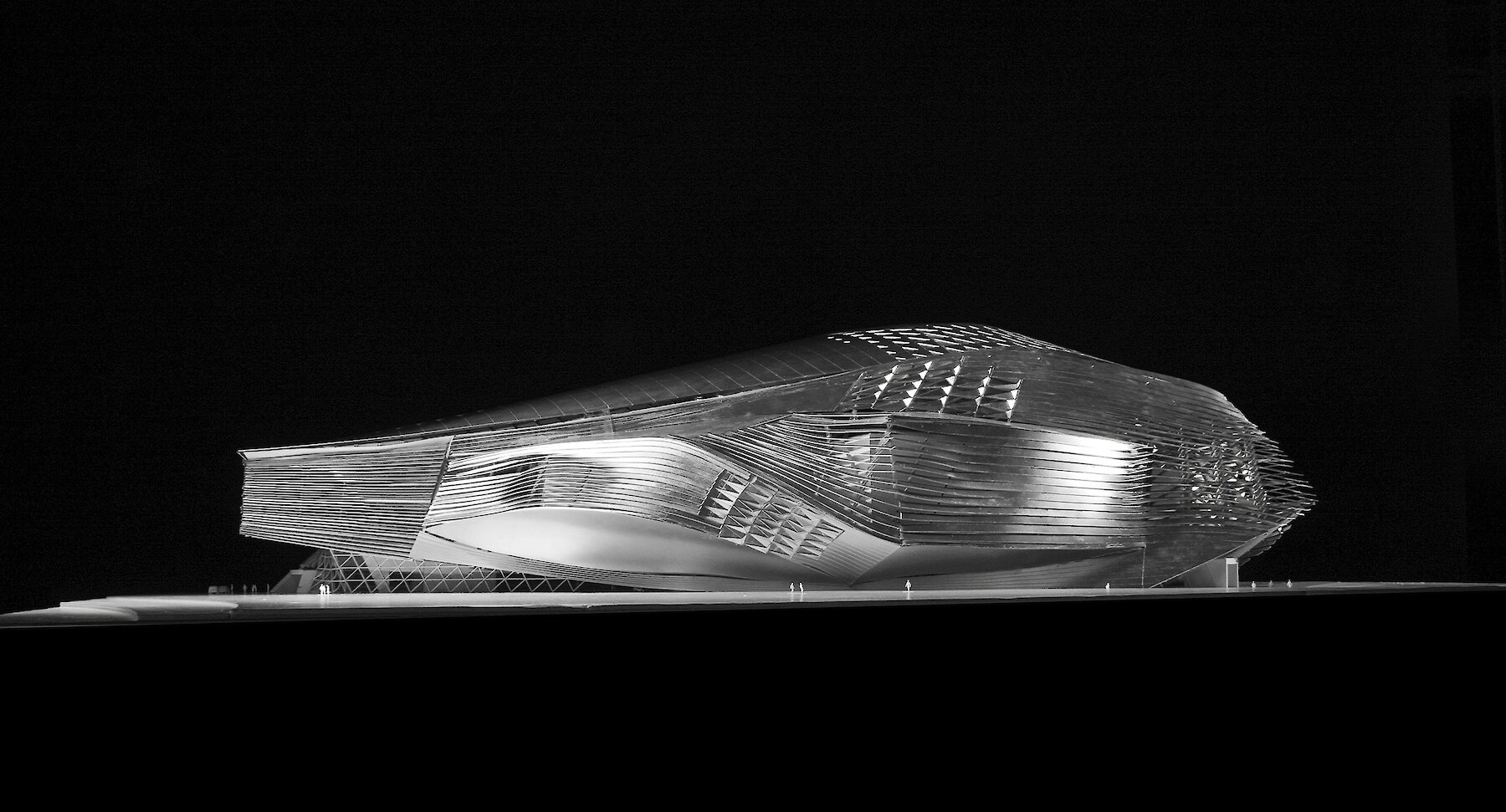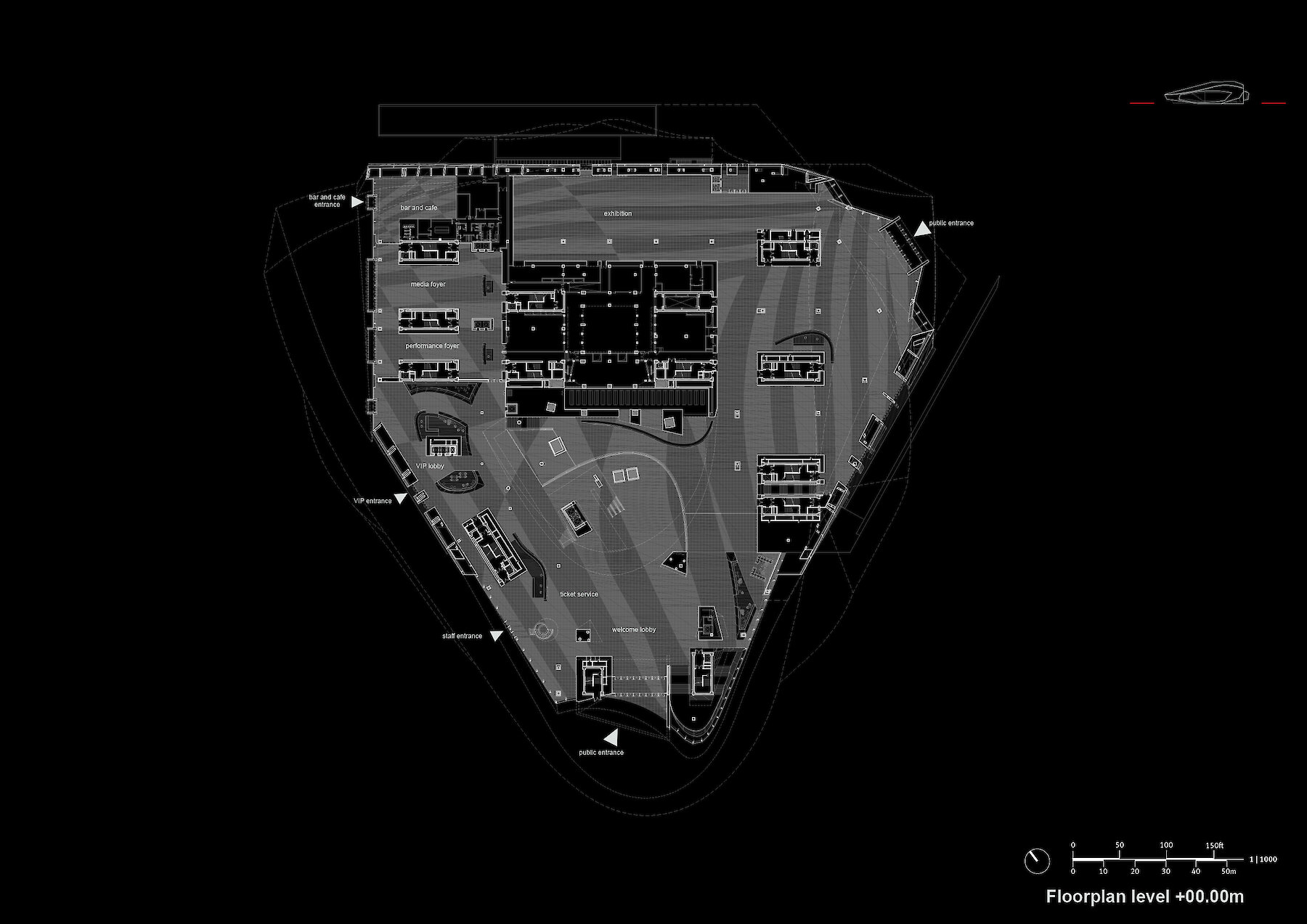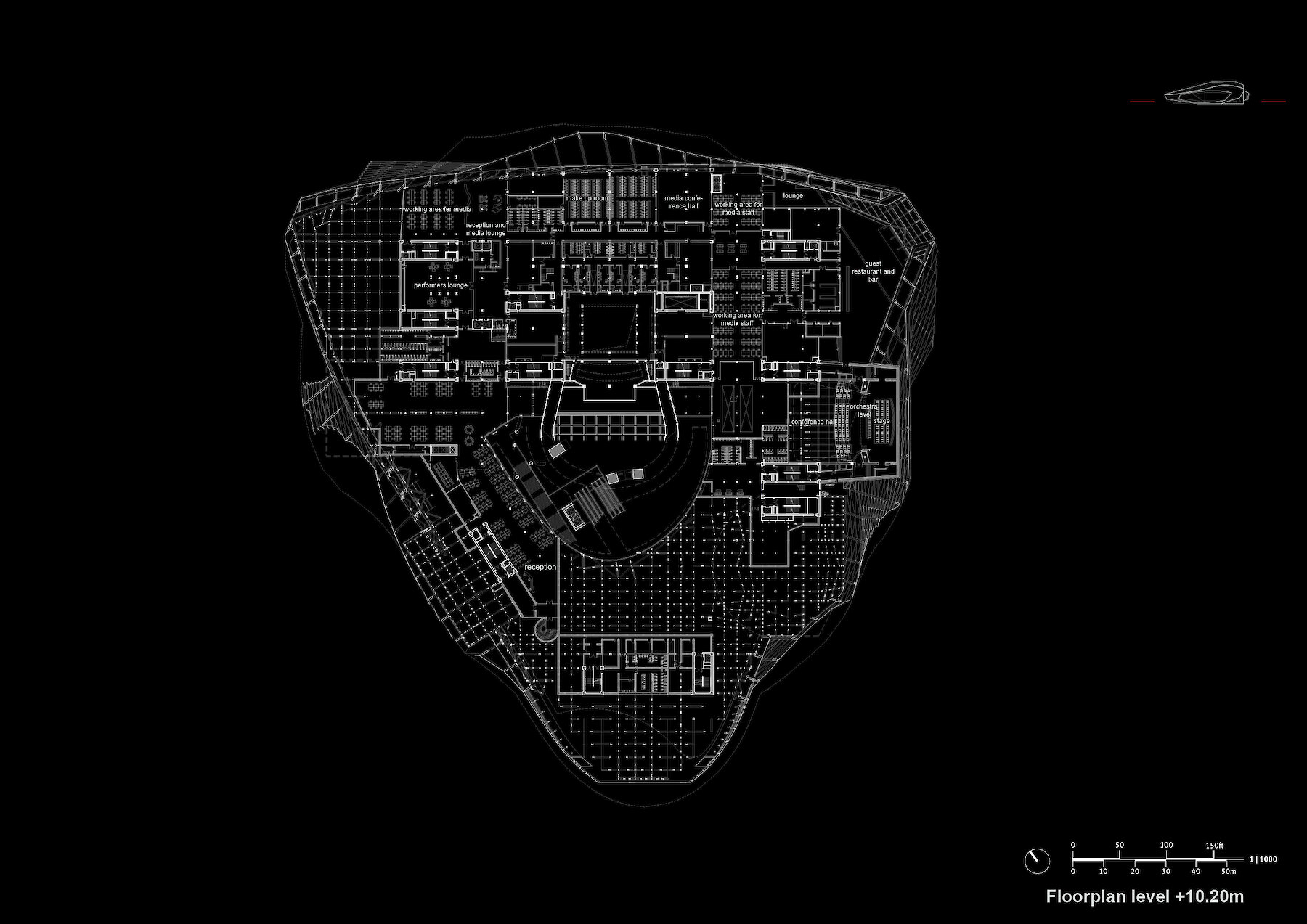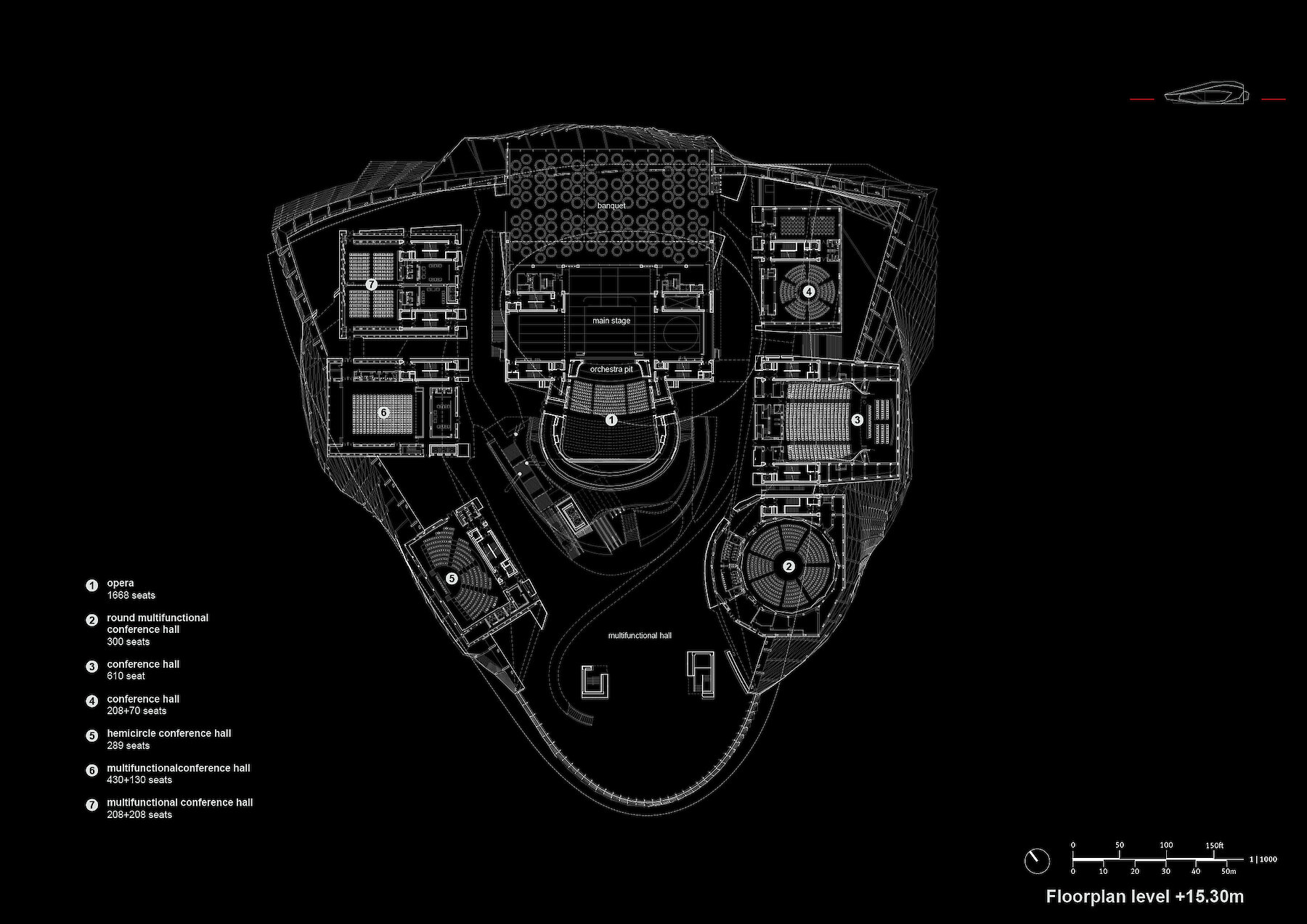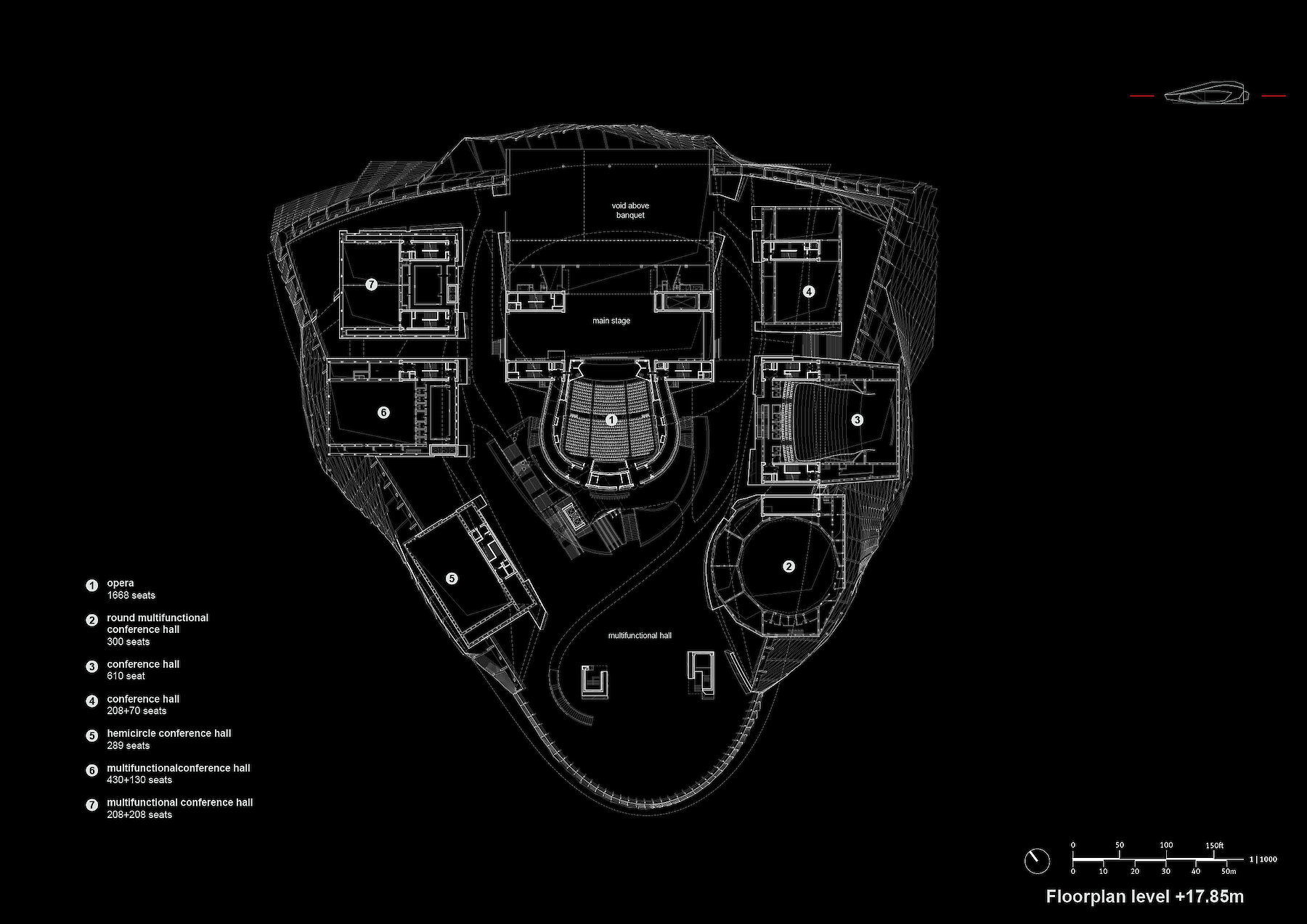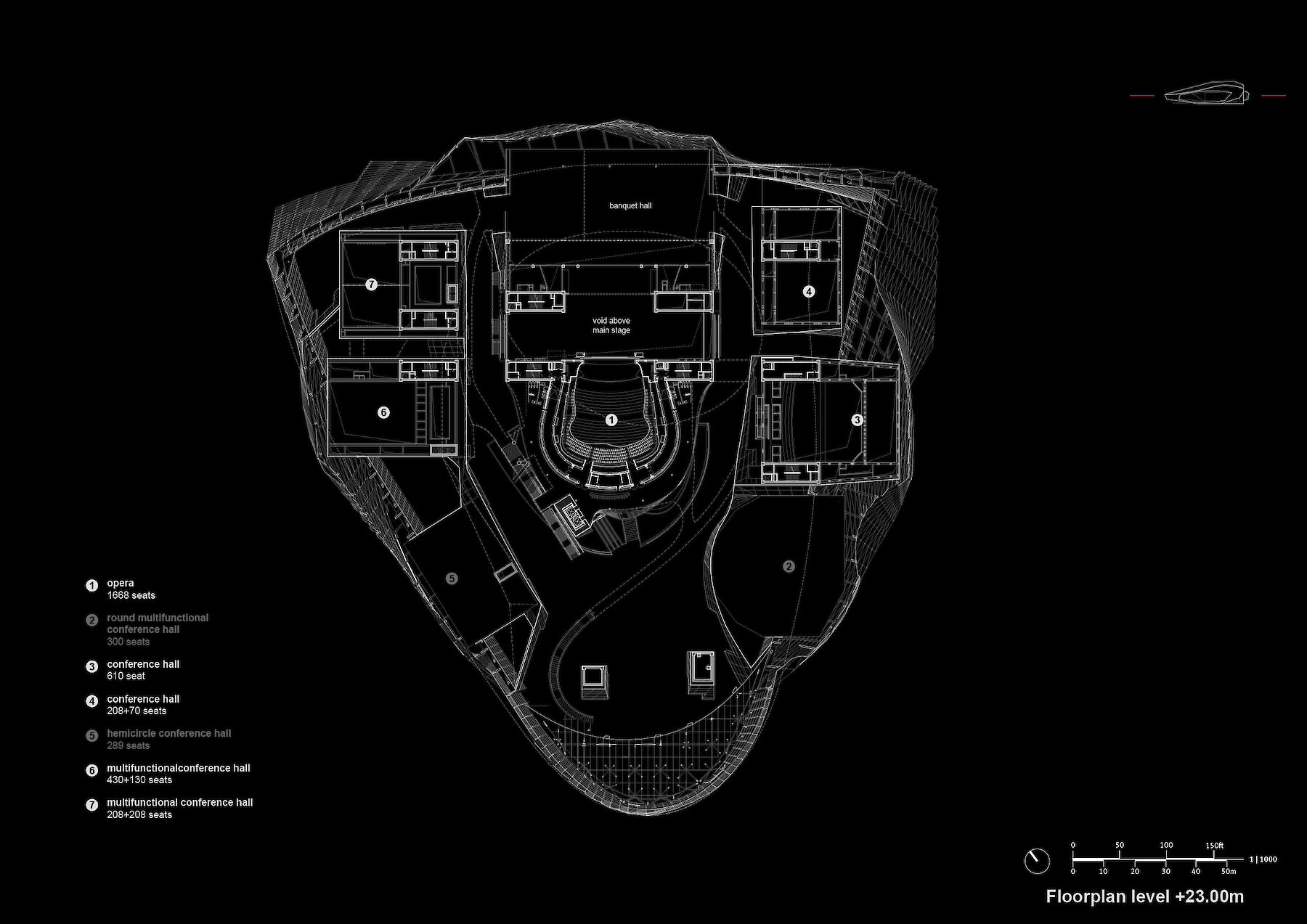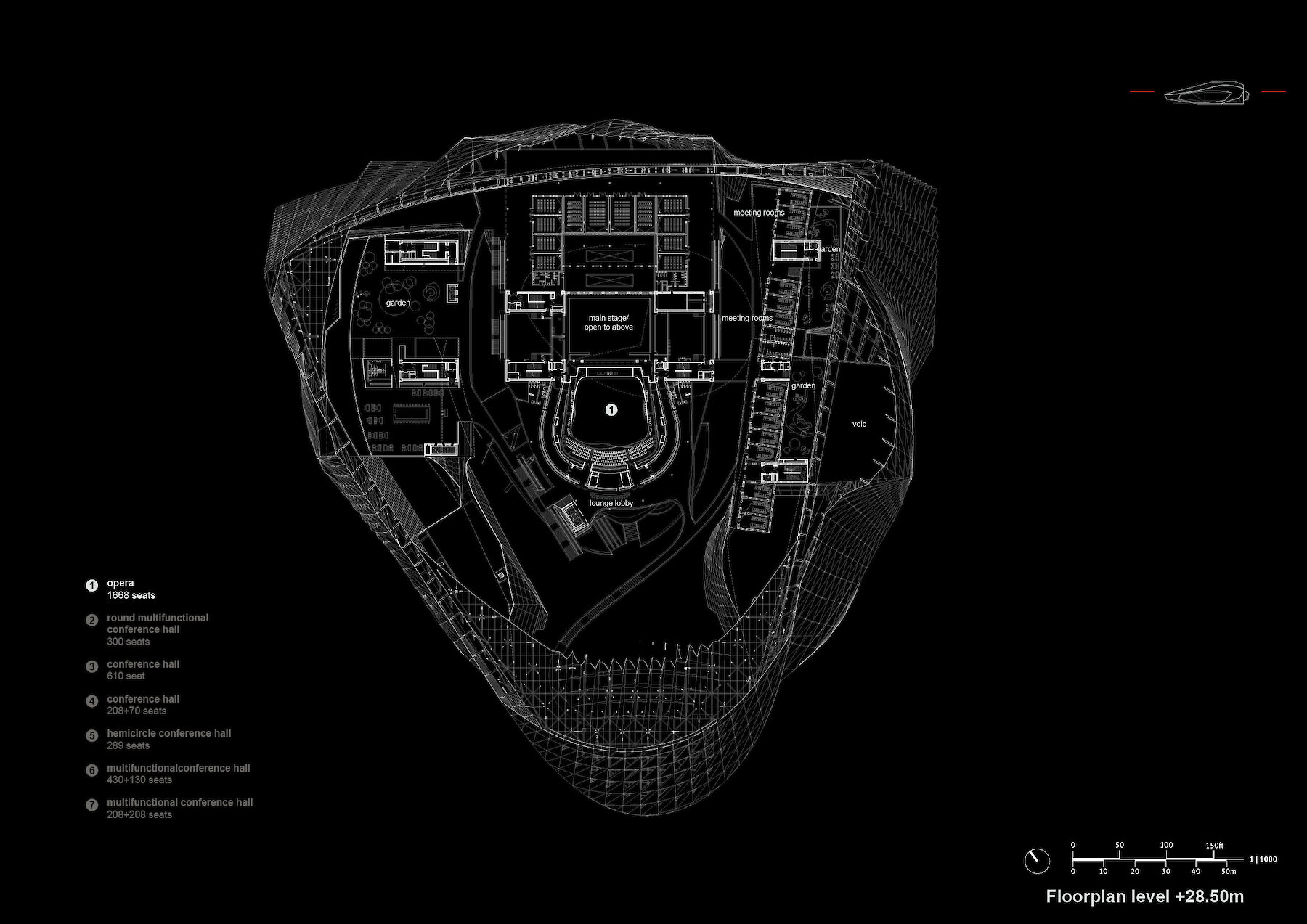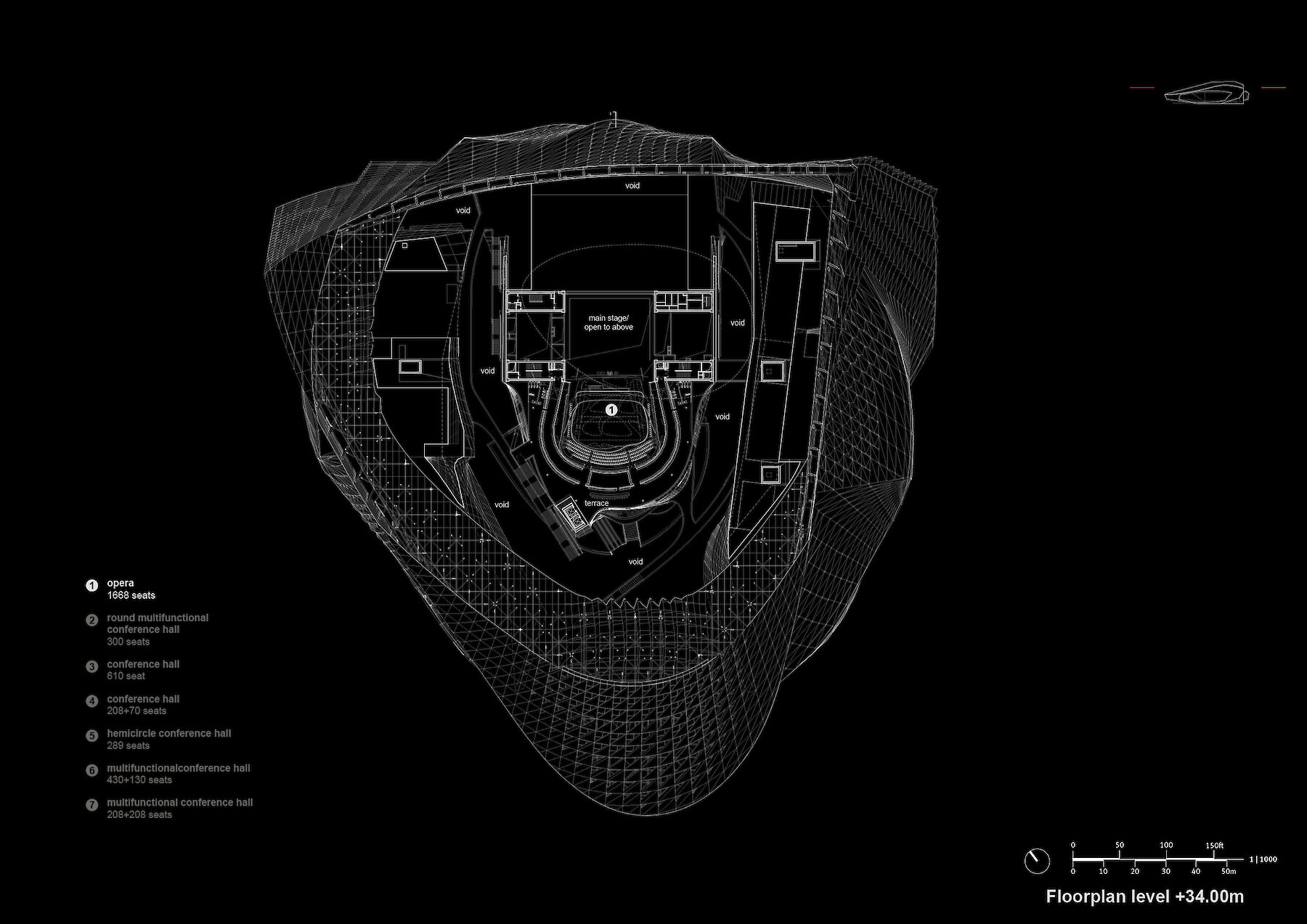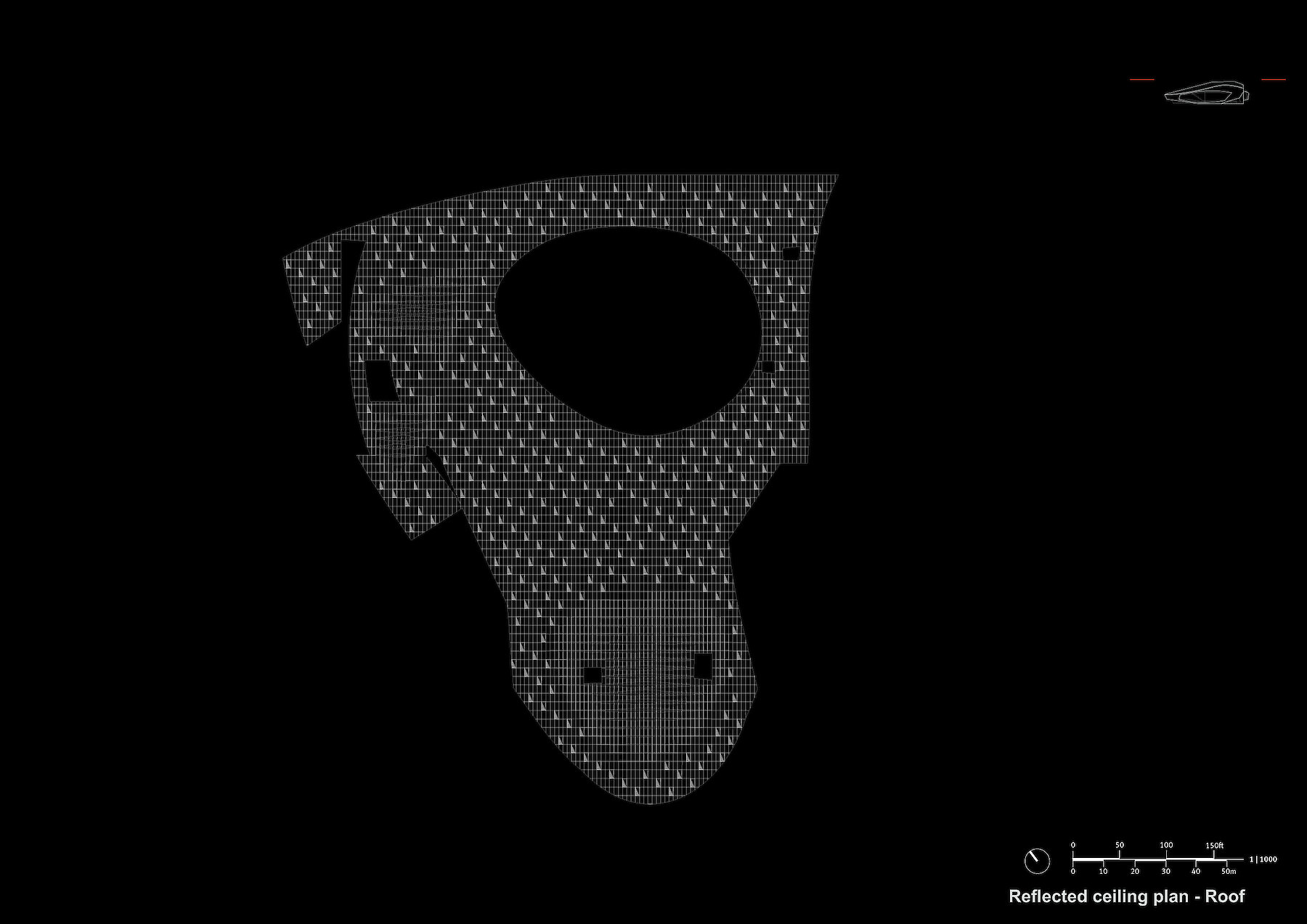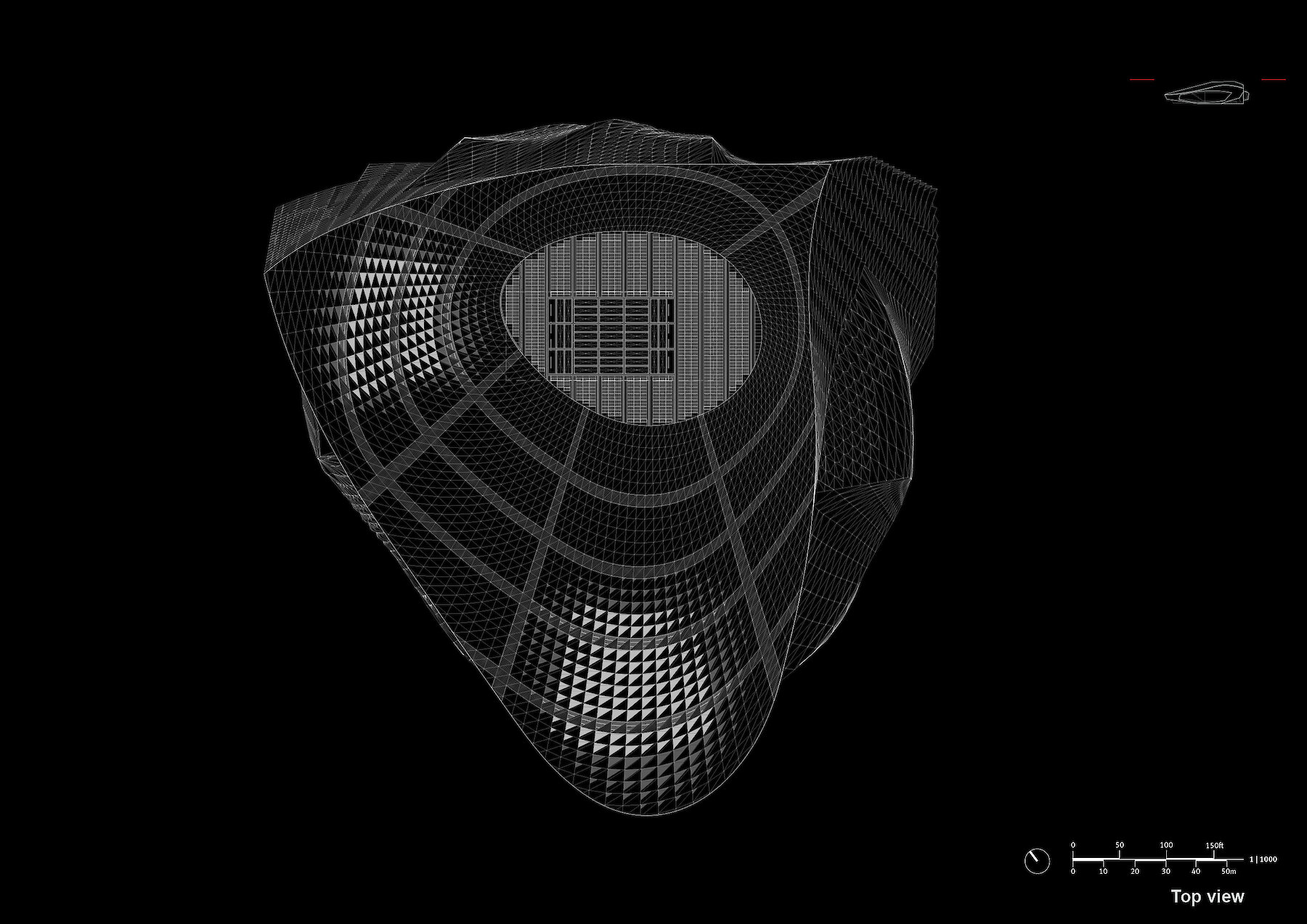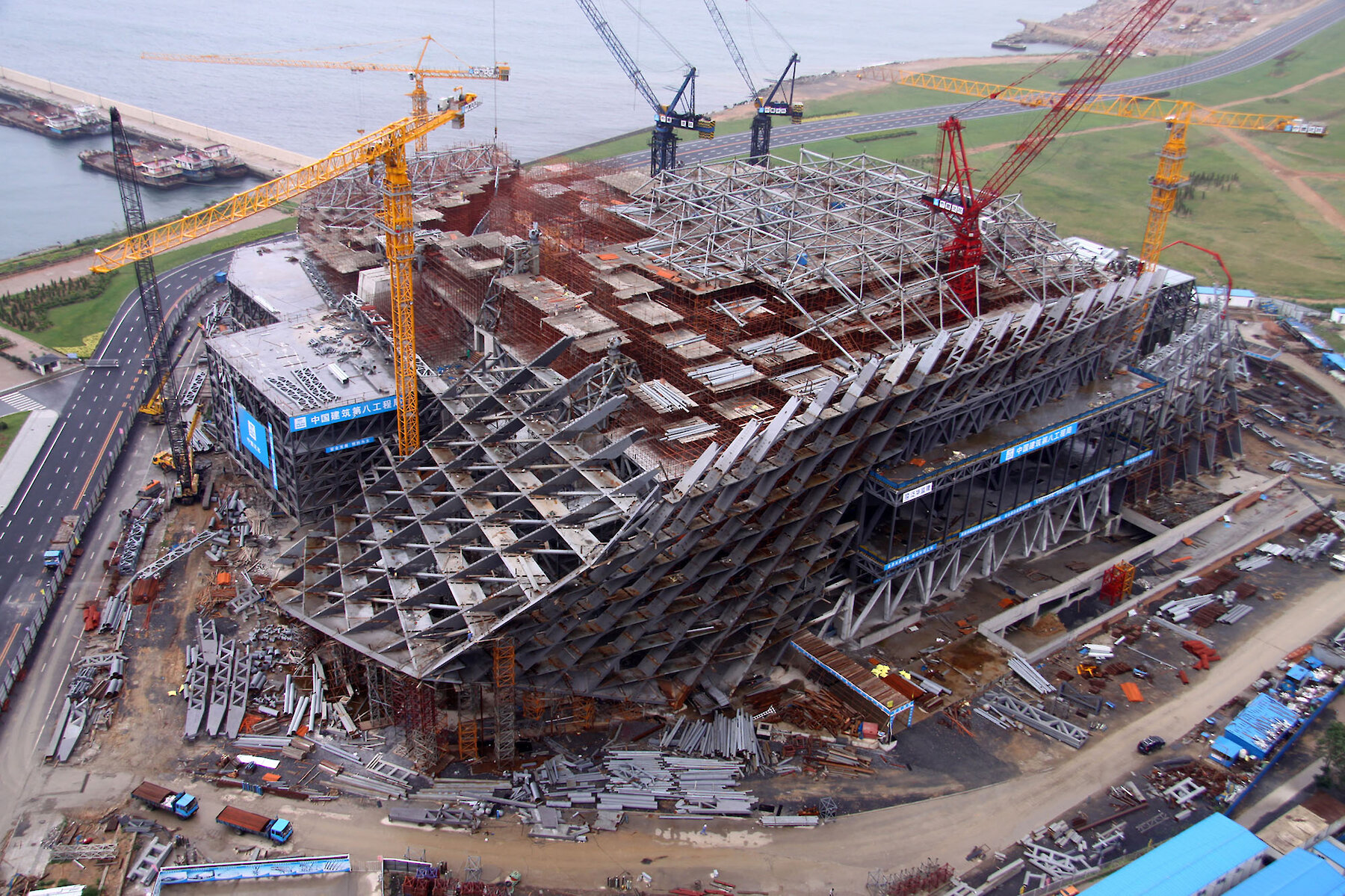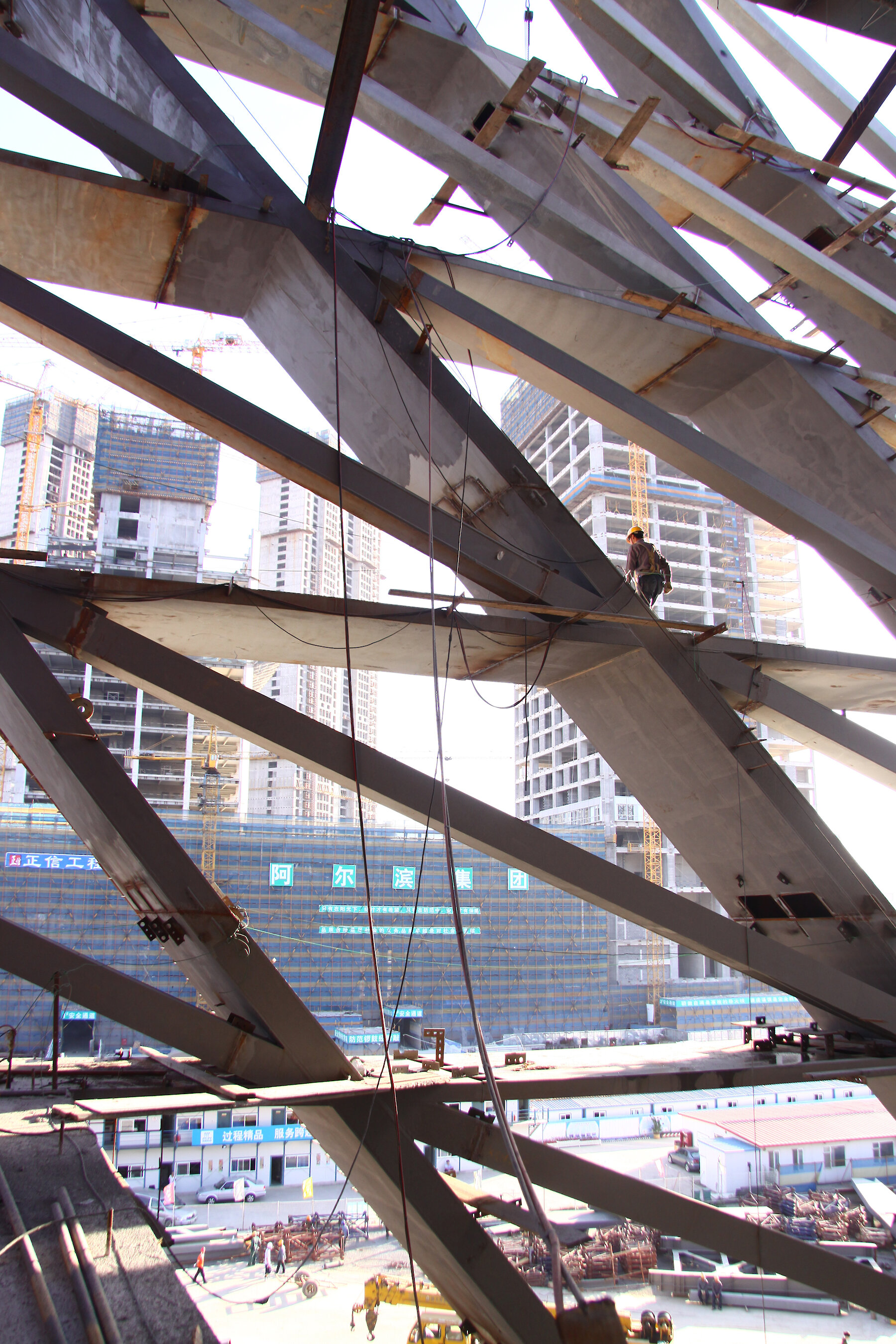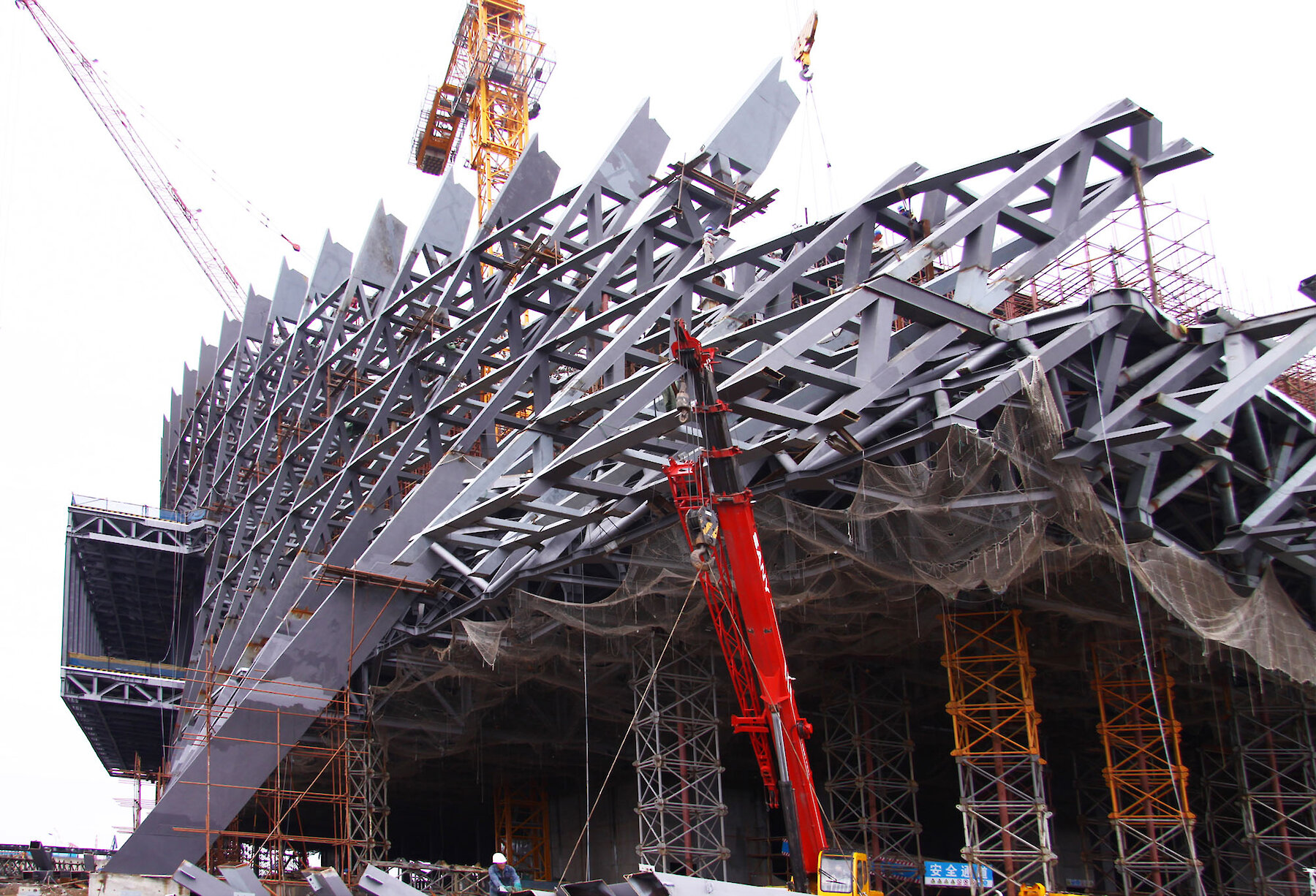Dalian International Conference Center
Spatially and formally dynamic inside and out
Spatially and formally dynamic inside and out
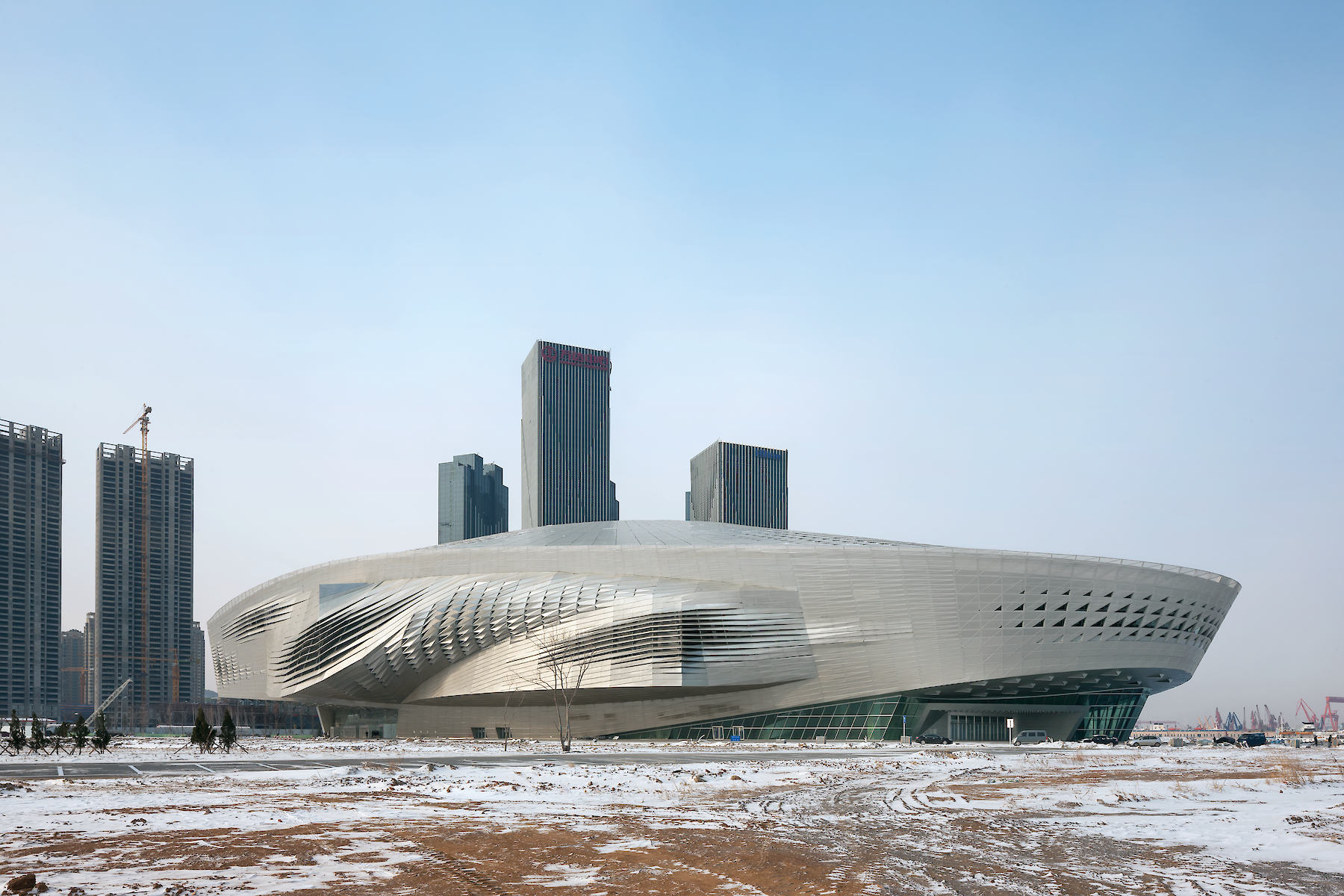
Landmark and icon, point of identification, and sculpture for the city’s new development district.

Sketch of Dalian Conference Center by Wolf dPrix
Coop Himmelb(l)au
Project info
The building has to reflect both the promising modern future of Dalian, and its tradition as an important seaport as well as an industrial, commercial, and tourist center in China’s northeastern province of Liaoning. The formal language of the project merges and combines the rational structure and organization of the conference center typology, with the floating spaces of modernist architecture.
Developed along the two main urban axes, the program defines the shape of the building, the inside literally pushing out and deforming the metallic skin of the building. The perforated aluminum slats of the exterior shell provide daylight to the inside, and give the building its striking sculptural appearance. The slats opened in some of the public areas offer selective views of the city and the bay of Dalian. New synergies are created “between the exterior skin, reacting to the climate, and the landscape surrounding it.” The inside pushes the skin outside.
The urban design task of the Dalian International Conference Center was to create an instantly recognizable landmark and icon at the terminal point of the extension of the main city axis. As its focal point, the building became anchored in the mental landscape of the locals and international community alike. Its footprint is arranged following the orientation of the two major urban axes joining in front of the building. The cantilevering conference spaces emerging from the facade create a multifaceted volume differentiating itself from the close surroundings. The various theaters and conference rooms are covered by a cone-shaped roofing screen. The automatically-controlled daylight system enables to preserve atmospheric variety within the building, thus helping spatial orientation of the visitors.
The Dalian International Conference Center combines functions within one hybrid building with synergetic effects of functionality and spatial richness: a conference center, theater and opera house, exhibition center, basement with parking, delivery, and disposal areas.
Natural lighting in the circulation areas and most of the conference rooms contribute to creating an atmosphere. Its controlled supply allows for atmospheric variety inside the building, thereby assisting the visitors in their spatial orientation. The interior organization of the theater, the conference rooms and the circulations are comparable to an urban network of streets, plazas and identifiable “addresses” for better orientation. This arrangement also provides areas for informal meetings, relaxation and small talks before the conferences. A differentiated accessibility according to the type of users is organized in the public hall at ground level. The actual performance and conference spaces are situated at +15,30 m above the entrance hall.
The grand theater, comprising a stage tower and holding a capacity of 1,600 seats, and the directly adjacent flexible conference hall of 2,500 seats are positioned at the core of the building. With this arrangement, the main stage can be used both as a classical theater auditorium and a flexible multipurpose hall. The main auditorium is additionally equipped with backstage areas like in traditional theatres and opera houses. This scheme is appropriate to broaden the range of options for the use of this space: from conventions, musicals and theater plays to classical operas, with very little additional investment. The smaller conference spaces are arranged like pearls around this core, providing very short connections between the different areas. The main entrance is located on the seaside, highlighting the developing area of the city, including the neighboring cruise terminal.
It was determined from the outset that the World Economic Forum will be Dalian International Conference Center’s main user. The Swiss foundation known for its annual meetings in Davos also organizes Summer Davos, held every year in China.
One of the most important tasks of sustainable architecture is to minimize energy consumption. It is therefore essential to integrate natural environmental resources. The planners took advantage of Dalian’s location on the sea, along with its strong winds. More precisely, this means:
· The relative thermal energy, coming from seawater and natural ventilation of the enormous air volumes in the building, is used for cooling in the summer and heating in the winter.
· Low-temperature systems are used for heating while the core’s concrete thermal mass is utilized to keep the building temperature constant.
· The atrium beneath the roof is conceived as a solar-heated, naturally-ventilated sub-climatic area.
· The high degree of natural daylight reduces the energy consumption for artificial lighting and has a positive psychological impact.
· Integrated into the shape of the building, solar panels provide additional energy.
Structural Concept
“The building consists of two elements, the table, and the roof. The opera, conference halls, and access zones rest on the tablet-shaped steel construction, with a three-dimensional deformed facade-roof construction above it.” (Wolf dPrix)
As a whole, the structure essentially consists of two elements: table and roof. The opera and the congress halls as well as the access zones are based on the table-shaped steel construction, which was partially designed as a composite structure. This is covered by a three-dimensional deformed system that functions as the skin of the roof and facade. Both elements are designed as steel framework structures with a frame height of five to eight meters. The entire construction “floats” seven meters above the ground and is reinforced and supported by 14 vertical cores made of composite steel and concrete. The application of new design and simulation techniques, the knowledge of local shipbuilders to bend massive steel plates, and the consumption of more than 40,000 tons of steel enables breath-taking spans of over 85 meters and cantilevers of over 40 meters.
“At Coop Himmelb(l)au, we are thus putting Le Corbusier’s words into practice, when he said that buildings should be constructed like ships.” (Wolf dPrix)
Project insights

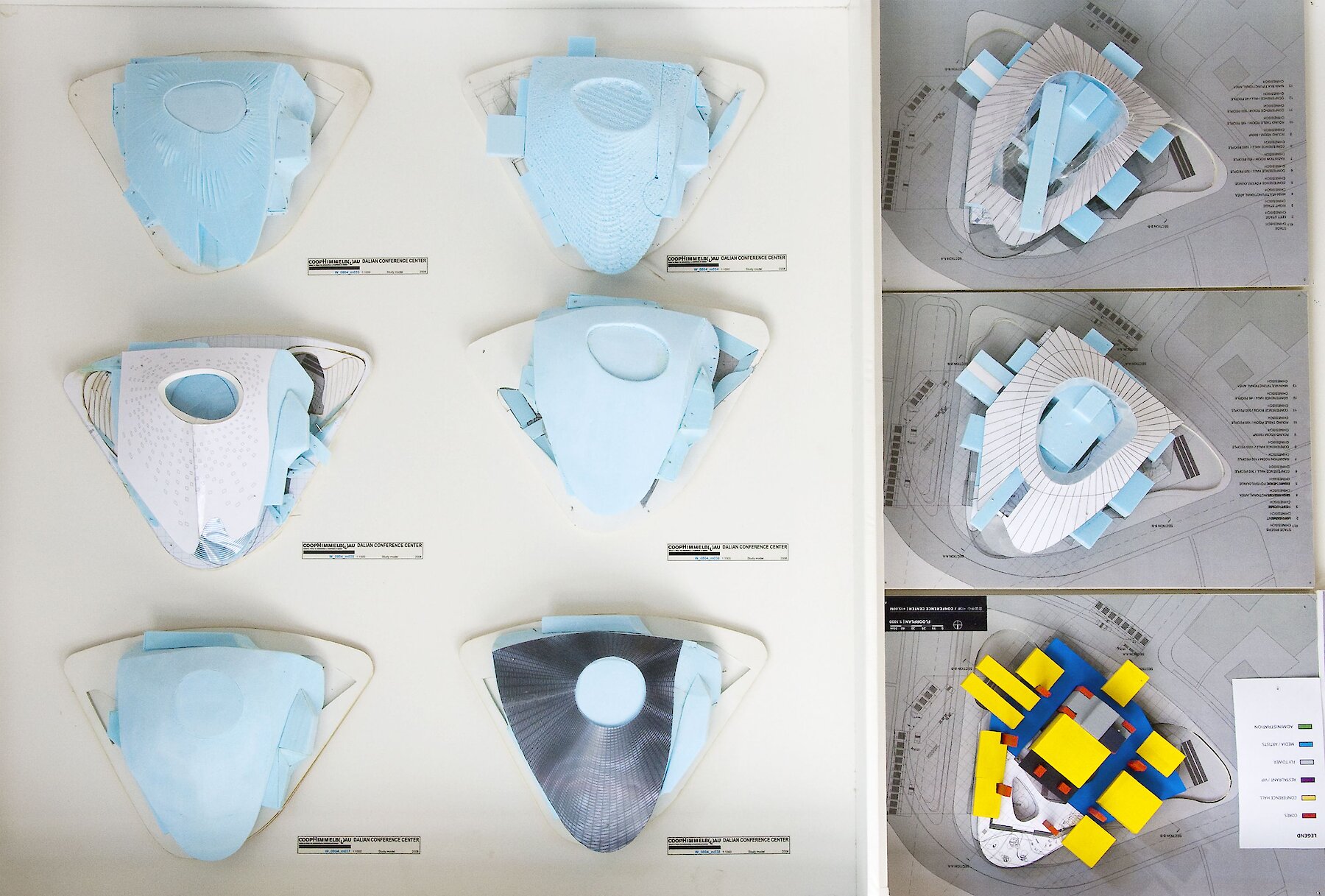

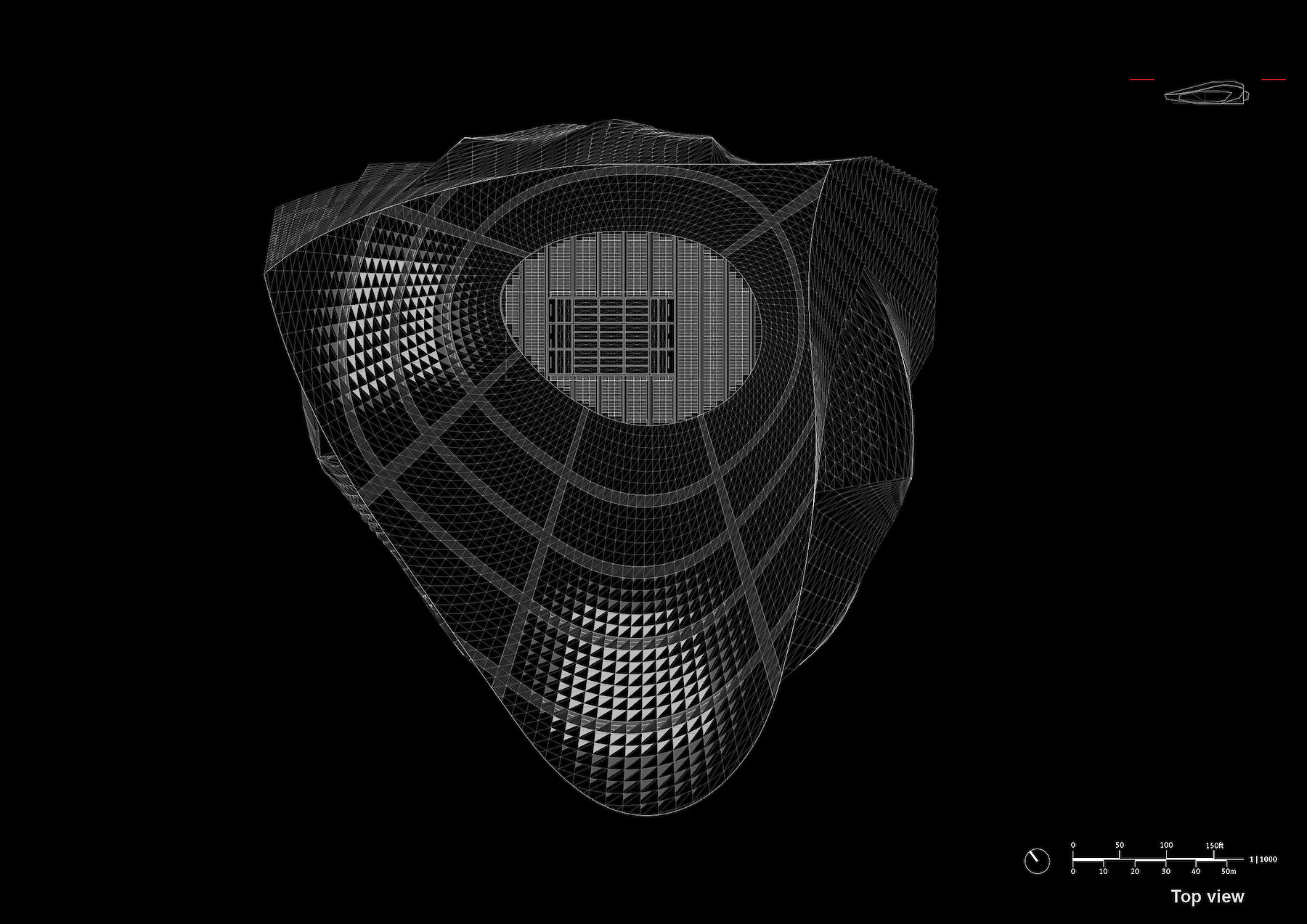
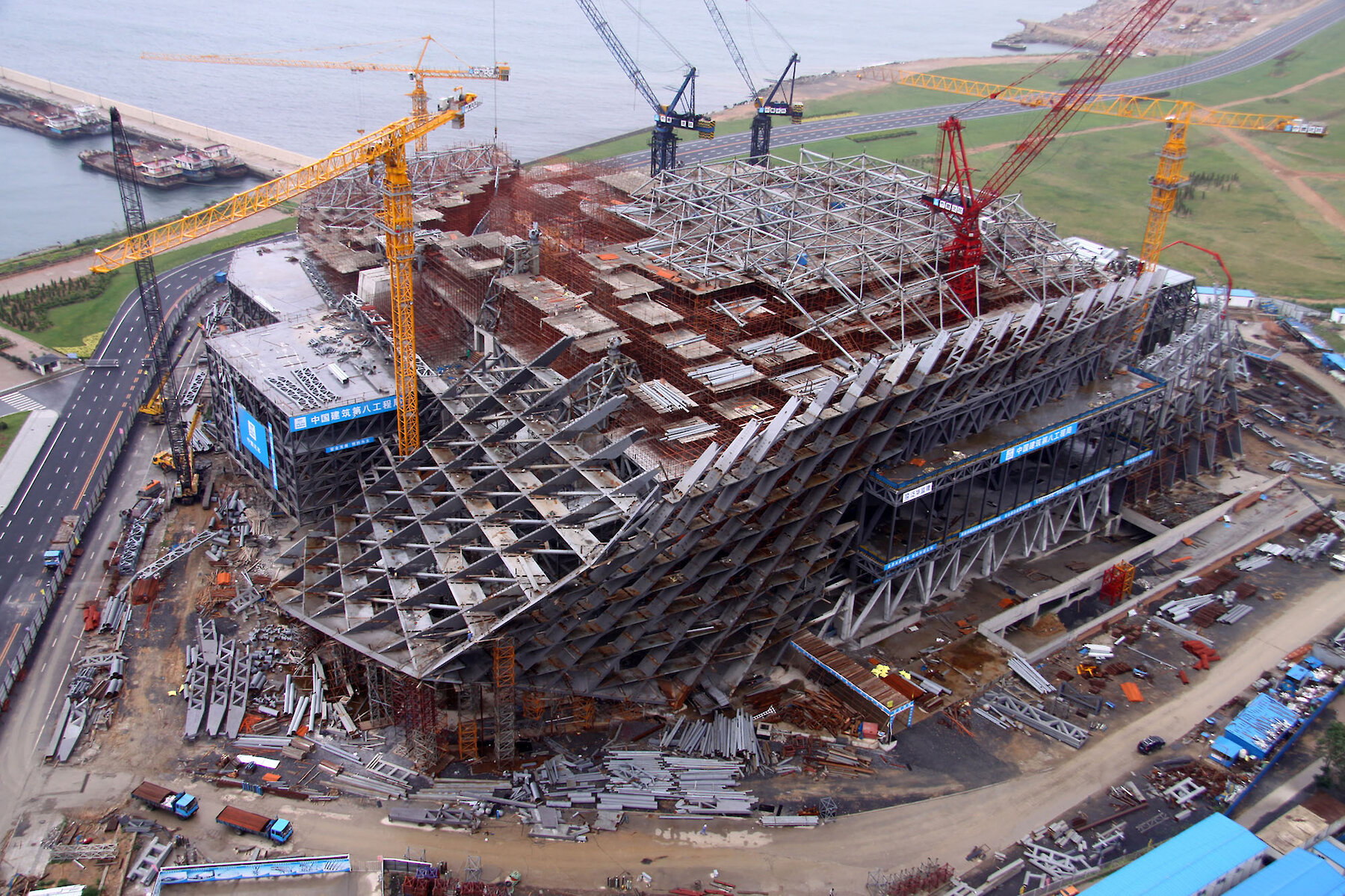
- Location
- Dalian, China
- Client
- Dalian Municipal People’s Government
- Competition
- 2008, 1st prize
- Start of planning
- 2008
- Start of construction
- 2008
- Opening
- 2012
- Site area
- 40 000 m²
- Gross floor area
- 117 650 m²
- Height
- 60 m
- Length
- 220 m
- Width
- 200 m
Quote
“Despite its enormous size for 7,000 people, the building is as vibrant as a city. The entry hall has the size of four football fields and reaches up to 45 meters high. Even with this size, the building is not forbidding but rather arranged and inviting.”
Hans Rauscher — filming, Jens Mehlan — cut
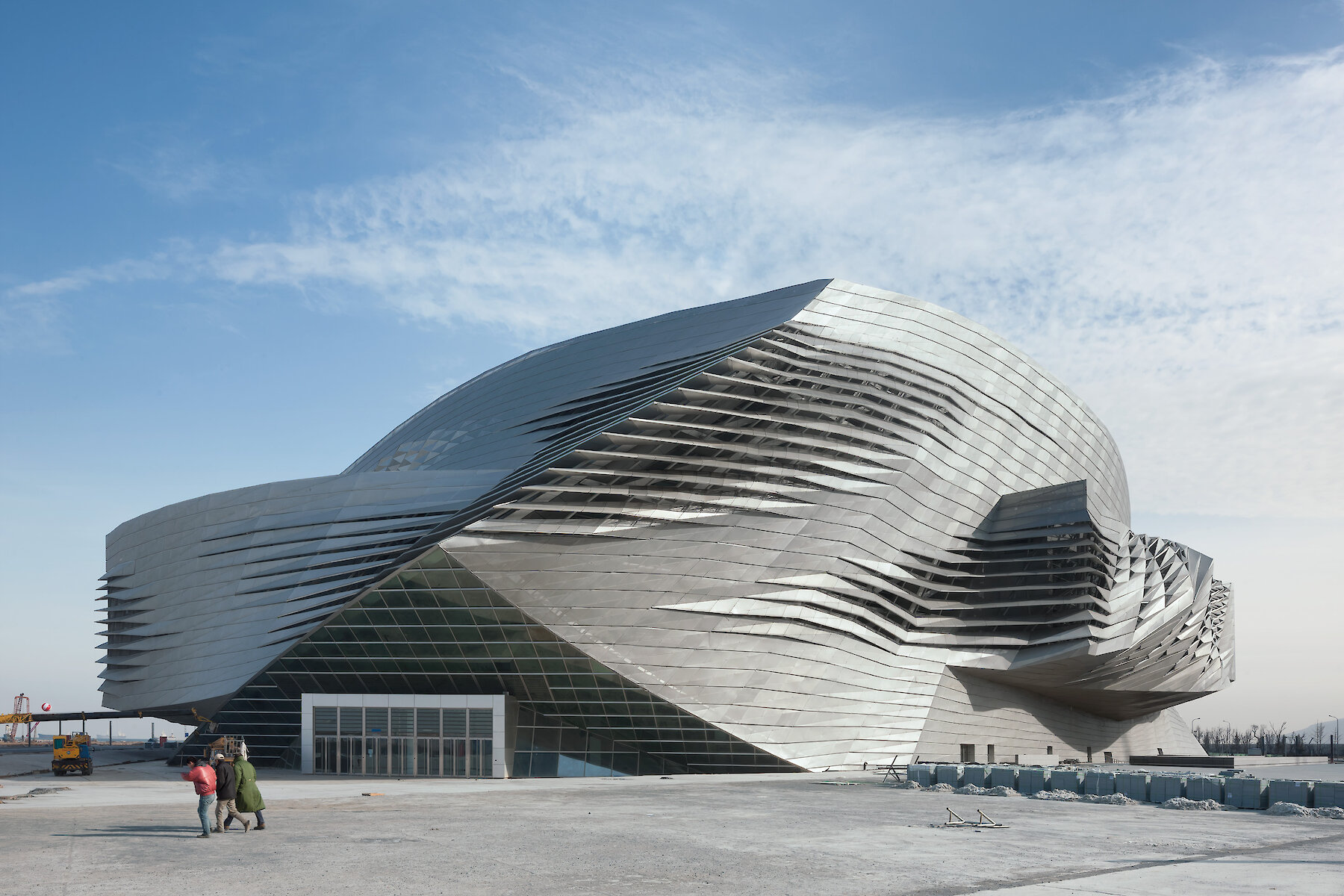
Duccio Malagamba
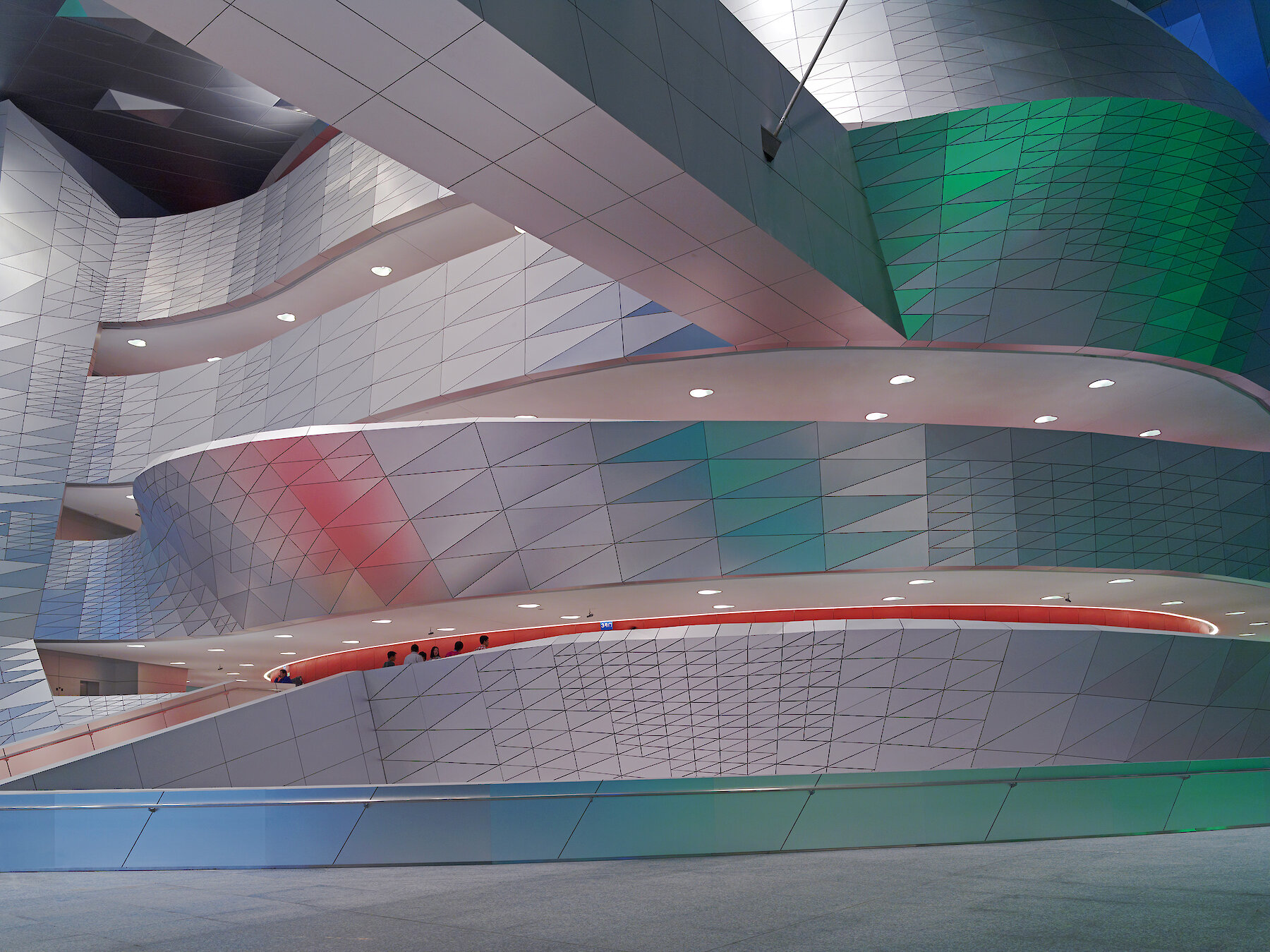
Shu He
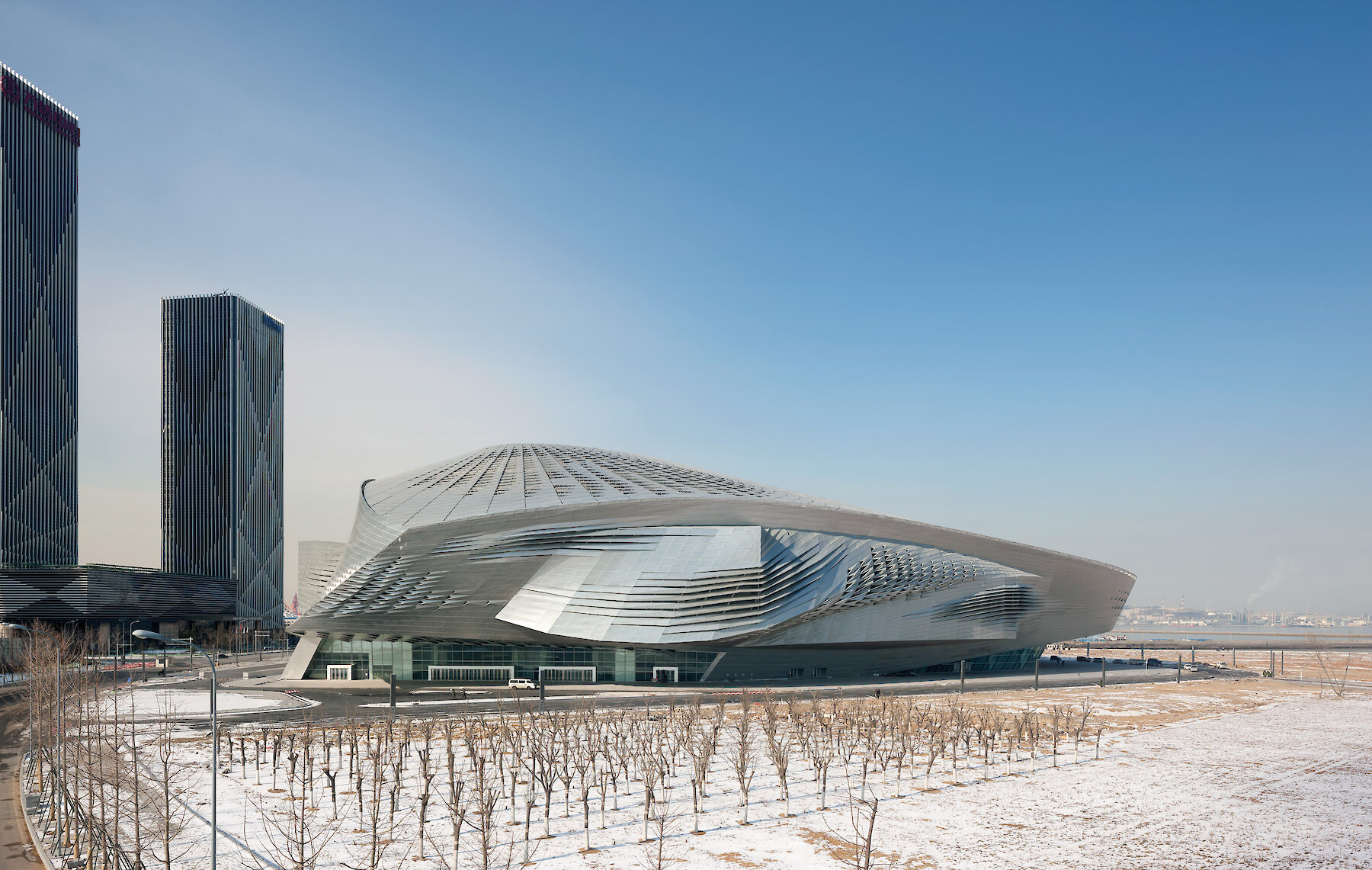
Duccio Malagamba
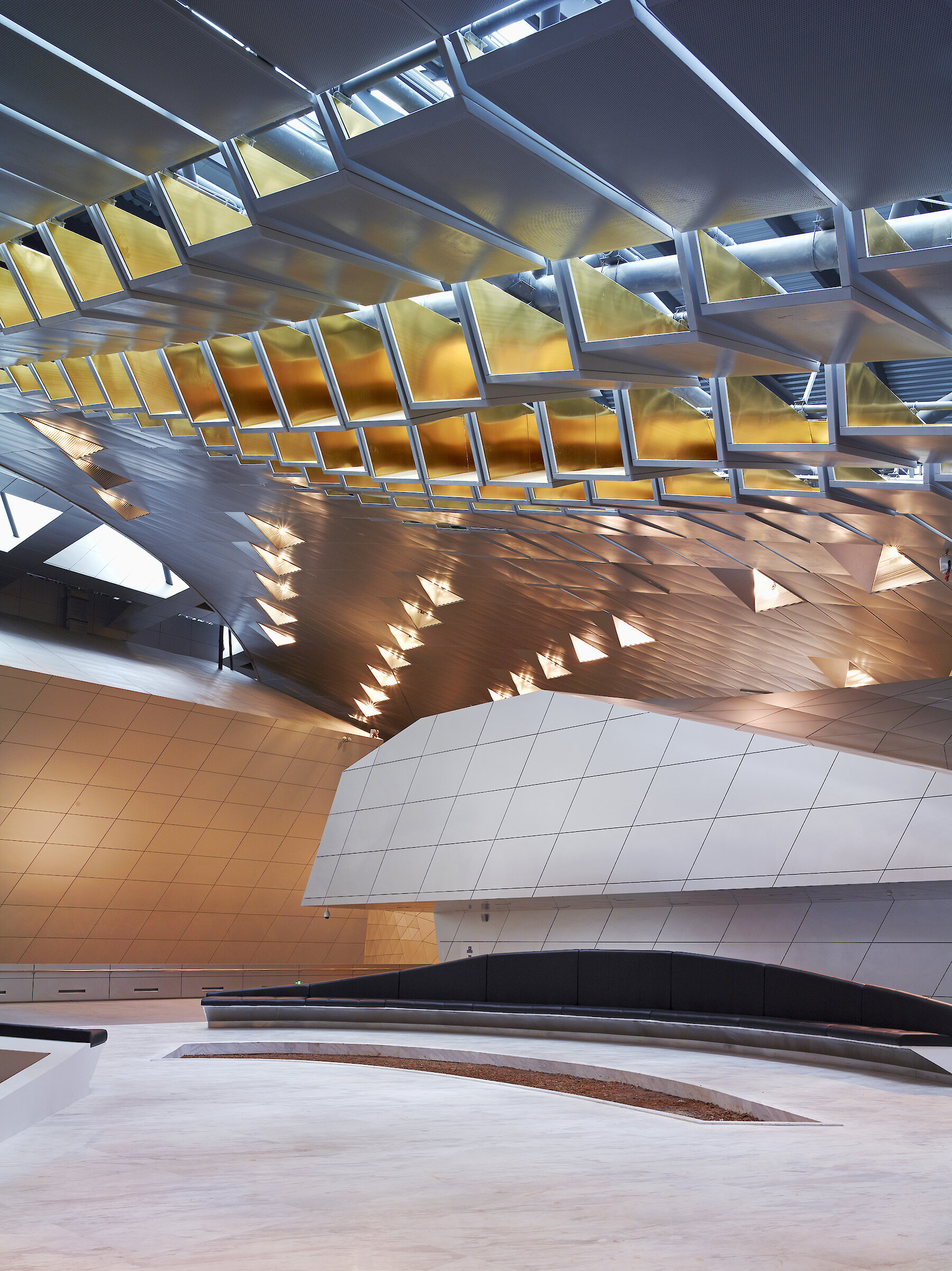
Shu He
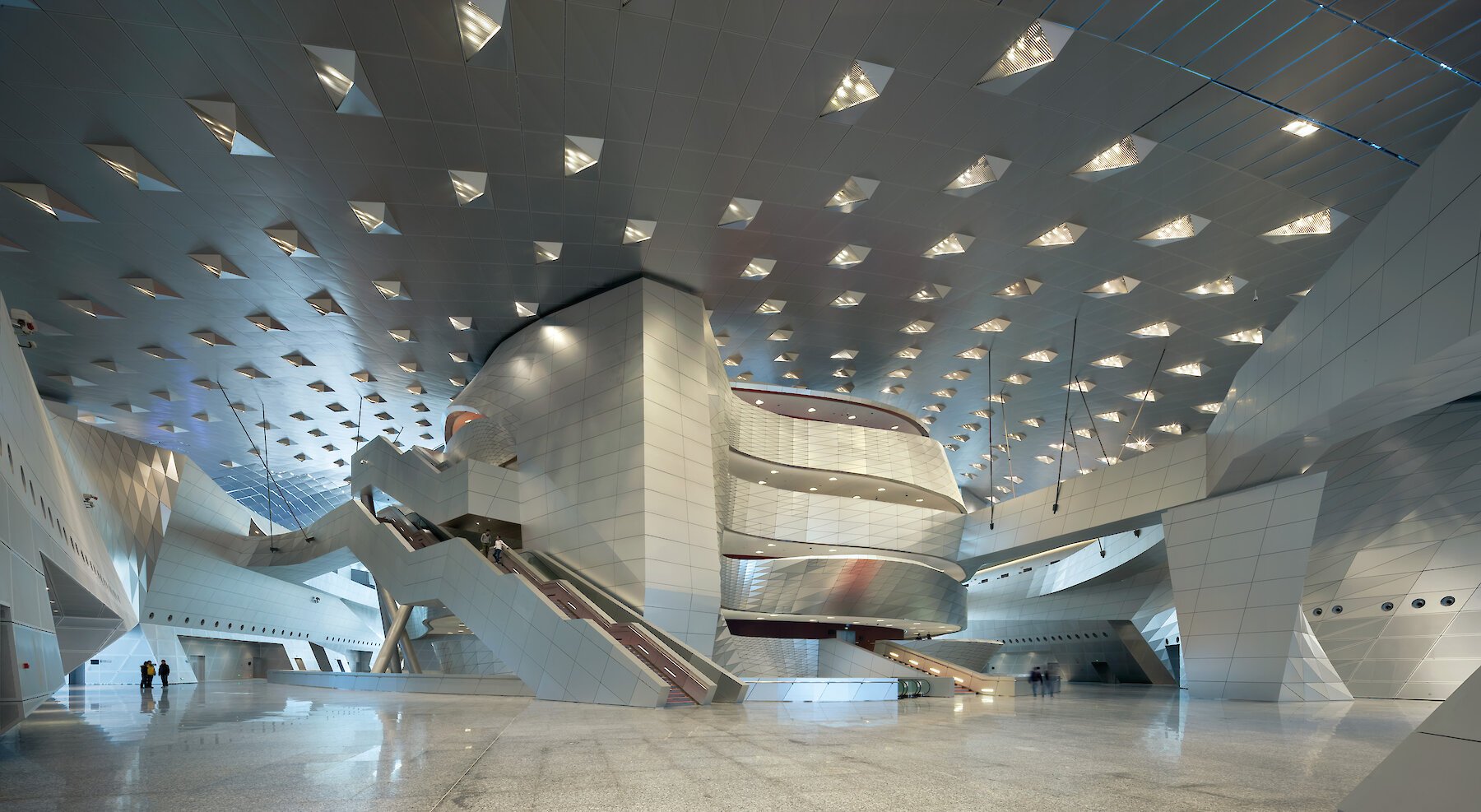
Duccio Malagamba
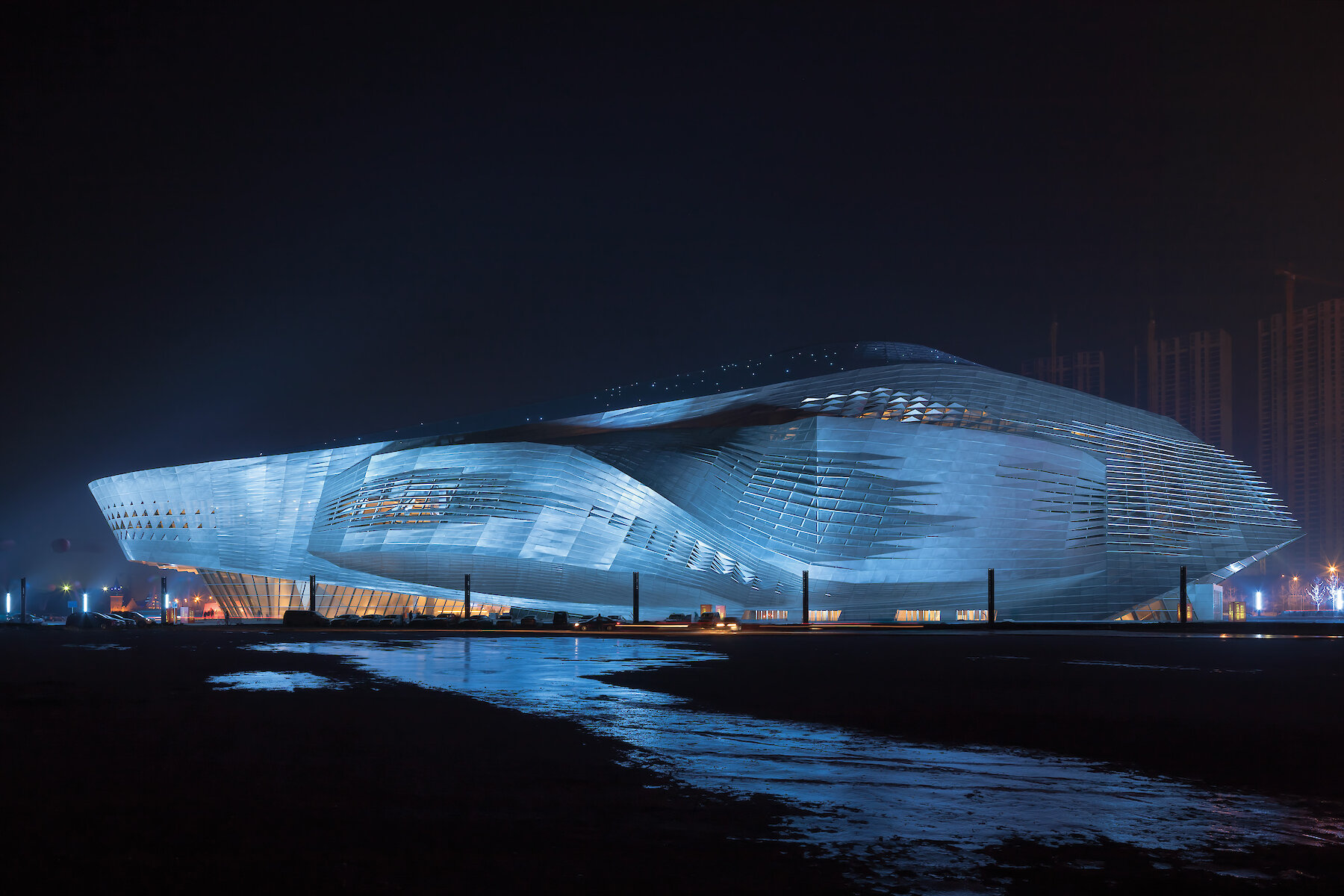
Duccio Malagamba
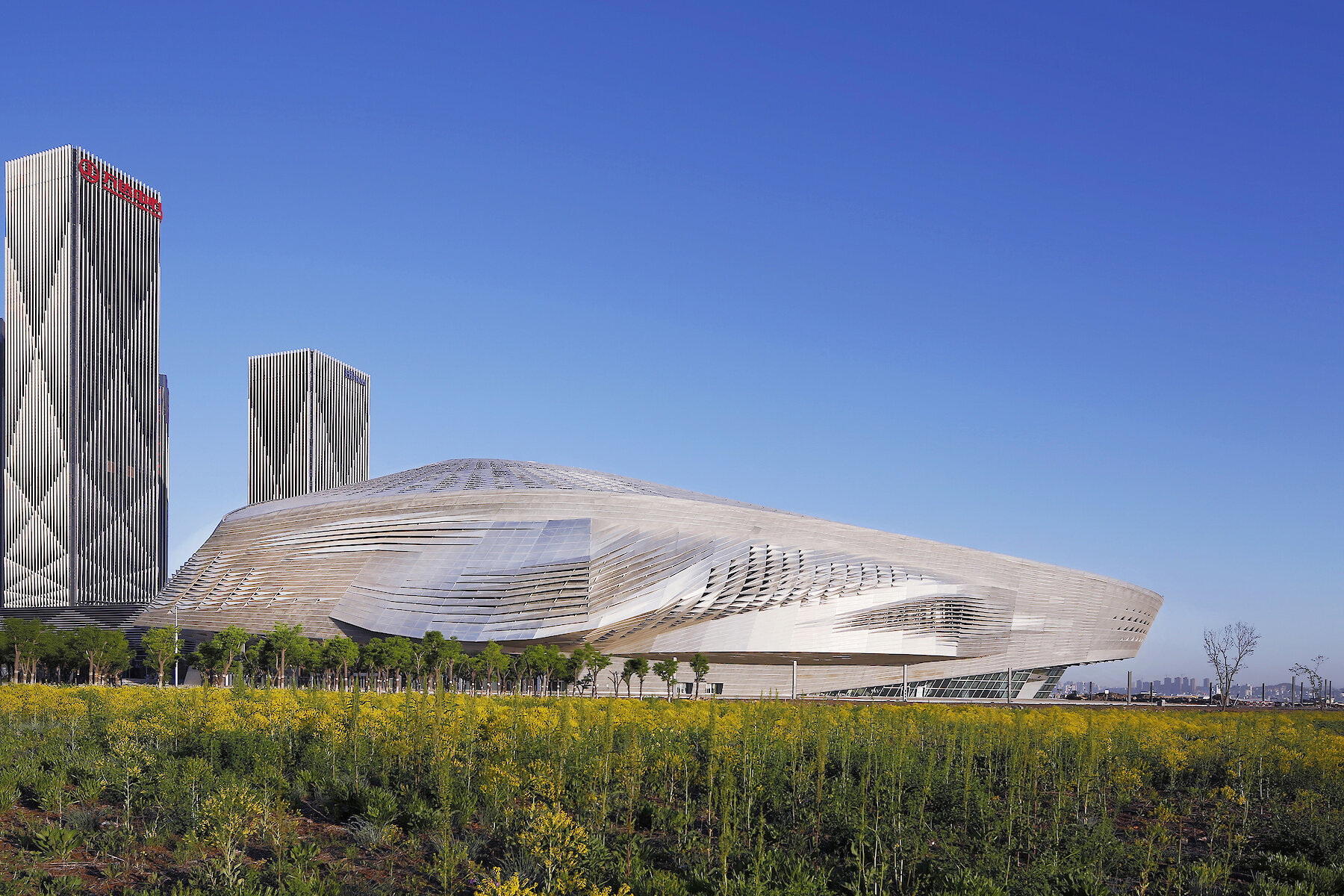
She He
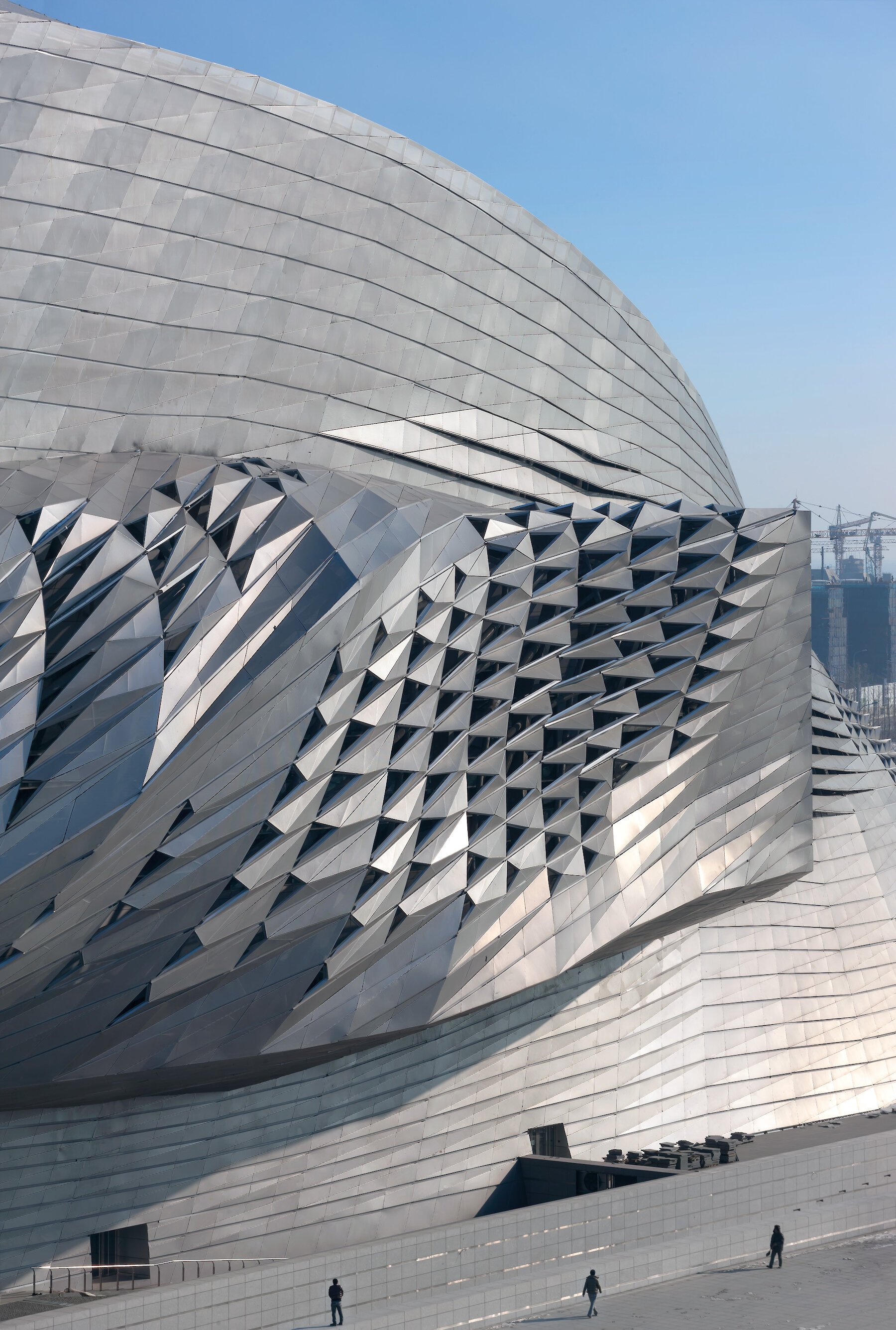
Duccio Malagamba
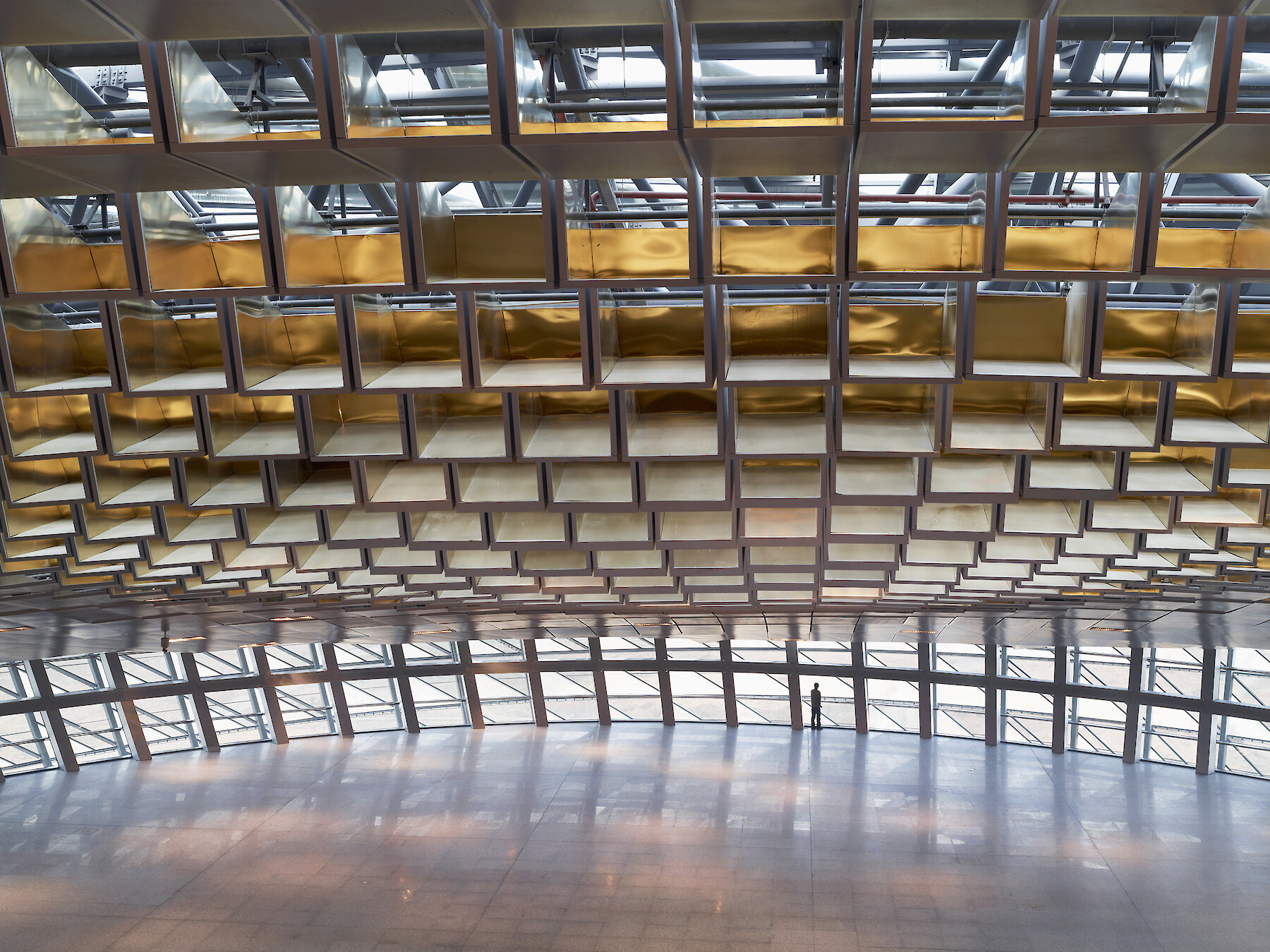
Shu He
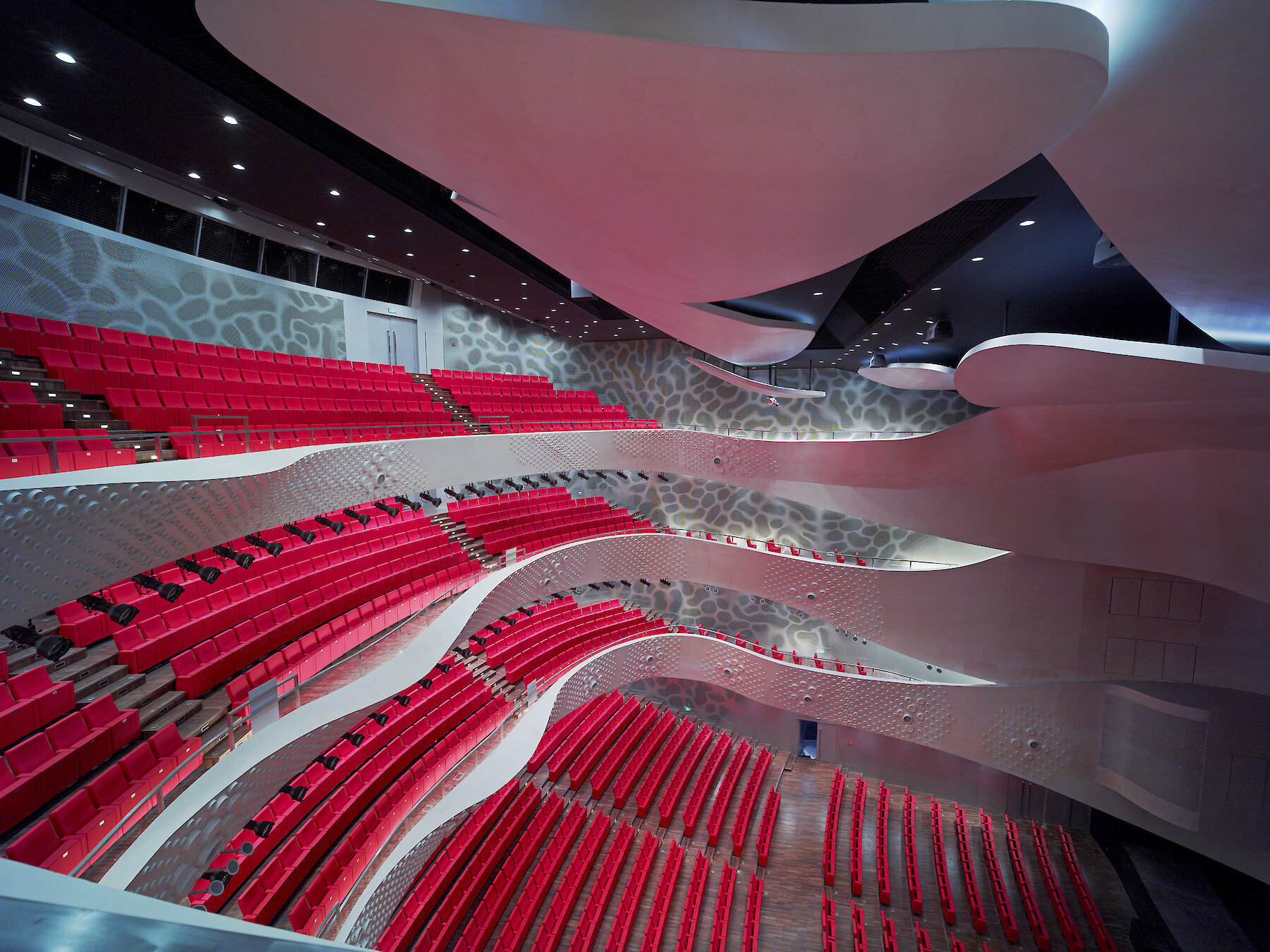
Shu He
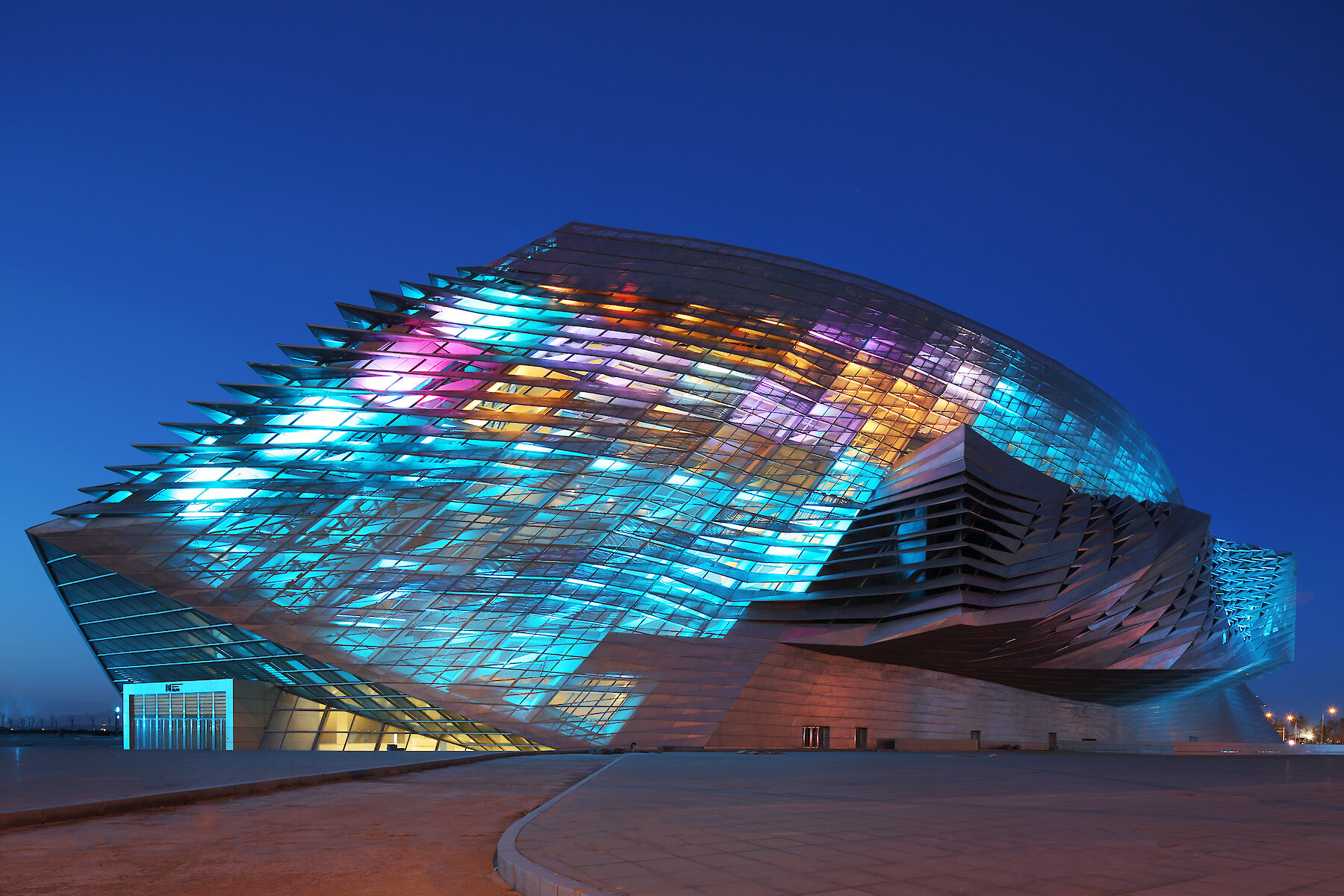
Shu He
On the map
Related projects
Museum of Contemporary Art & Planning Exhibition (MOCAPE)
Shenzhen, China
2007–2016
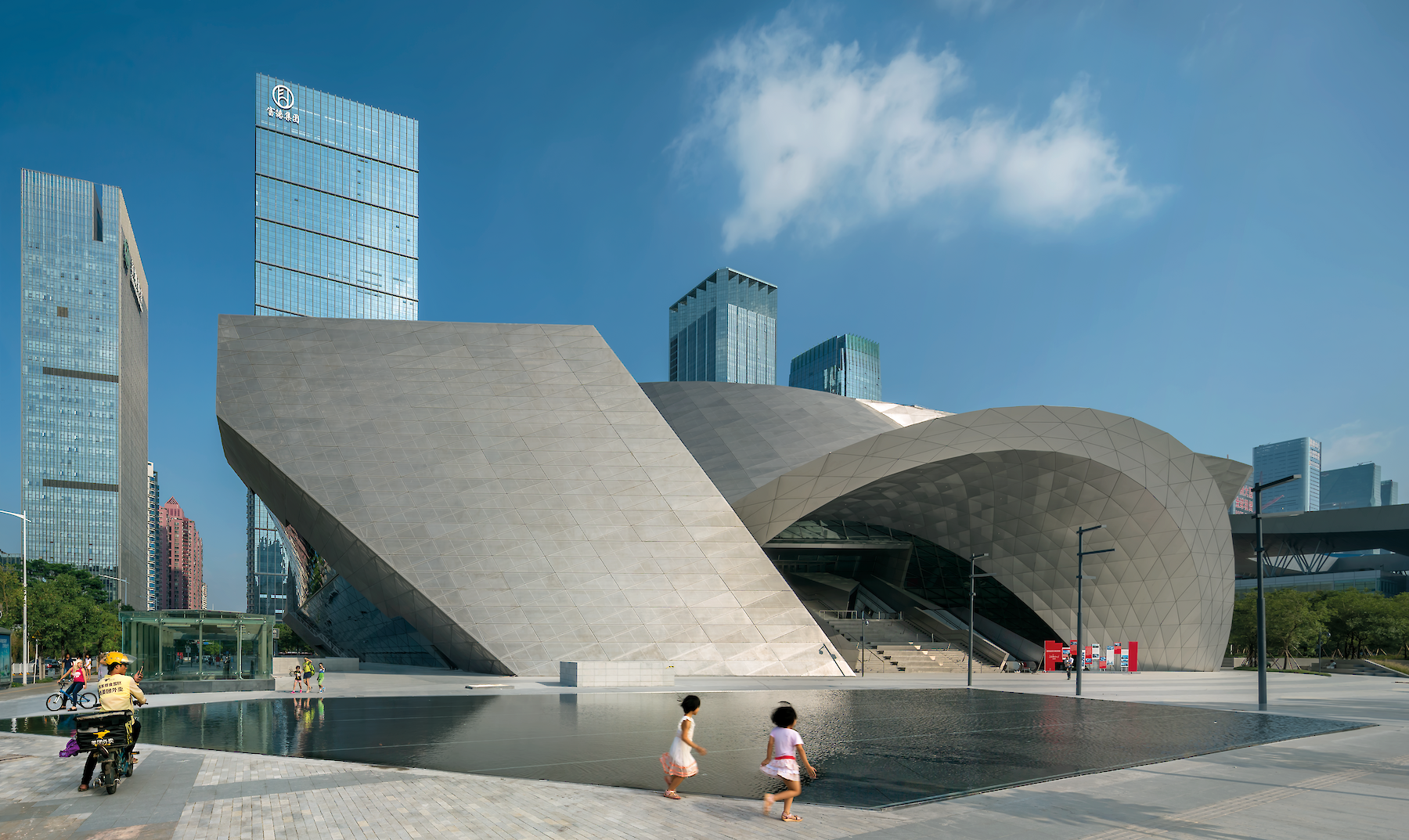

Musée des Confluences
Lyon, France
2001/2010–2014
